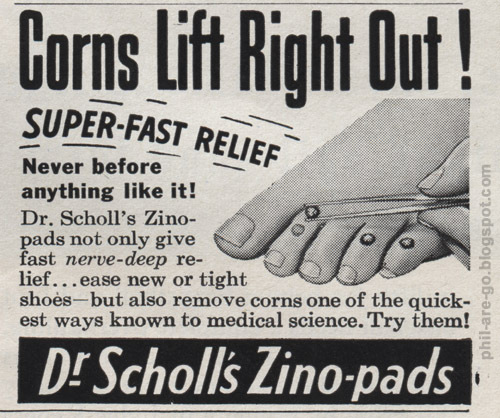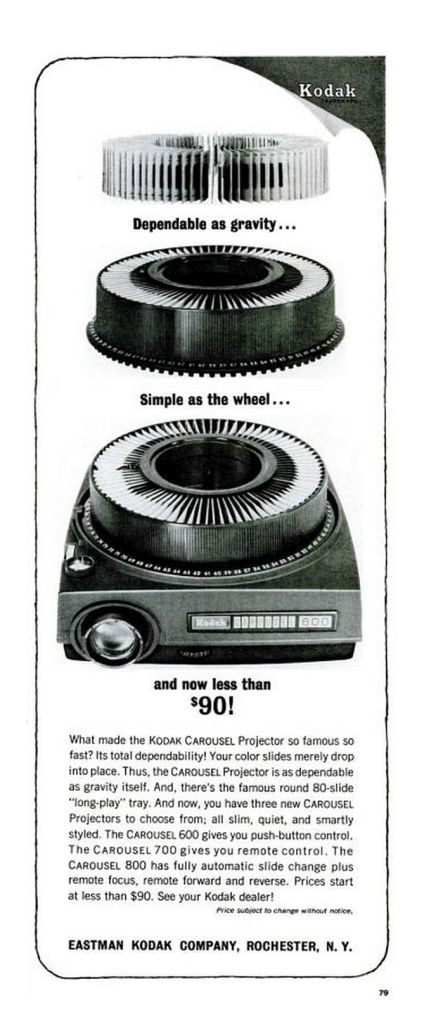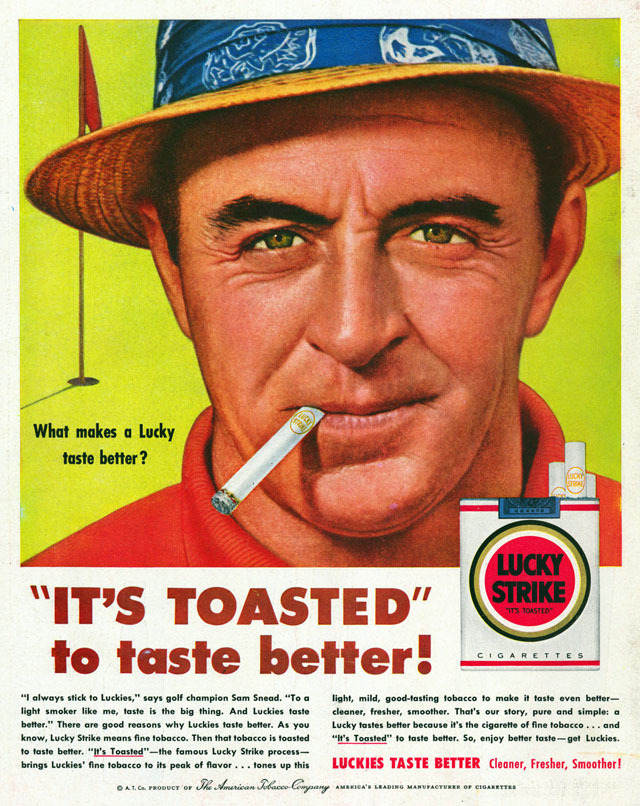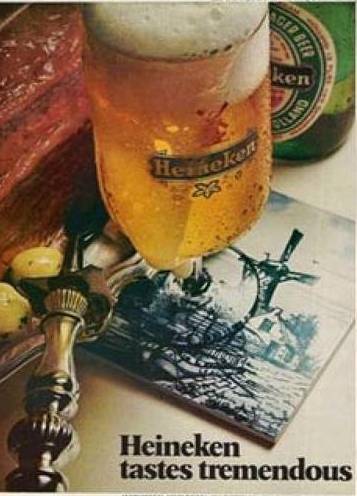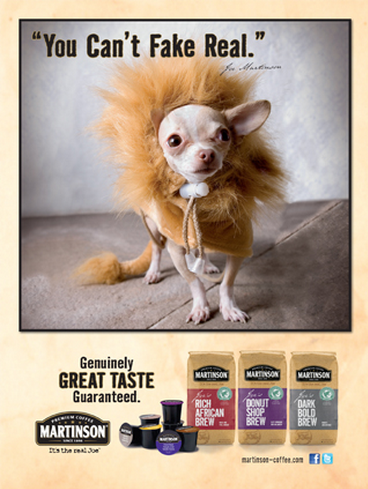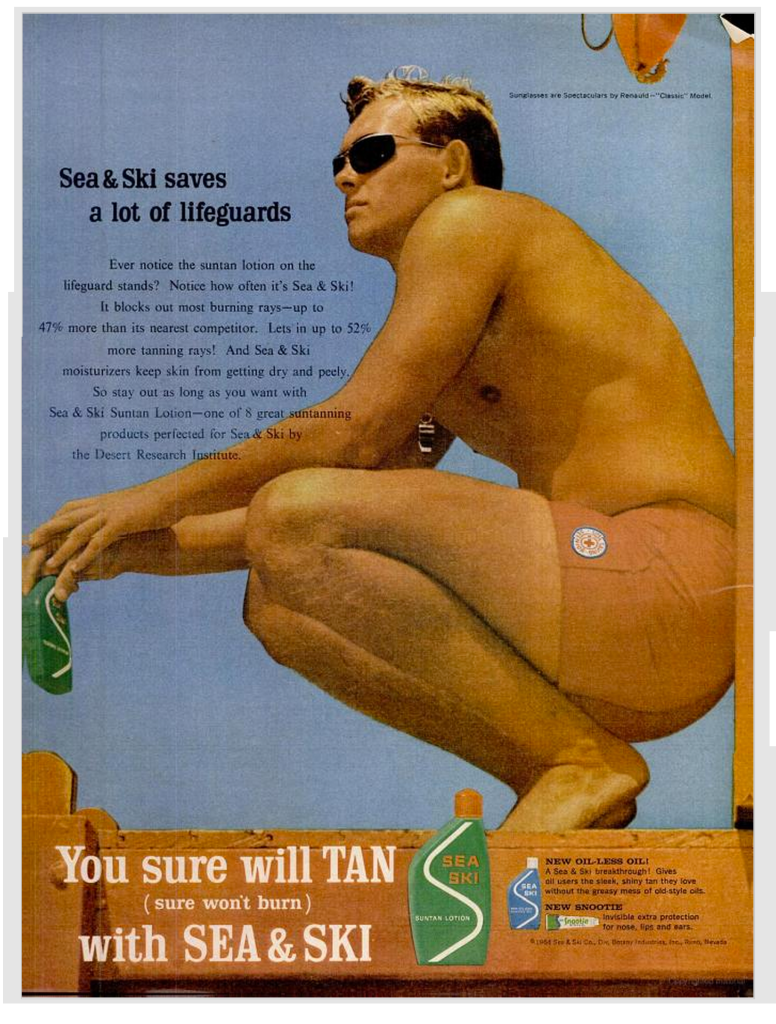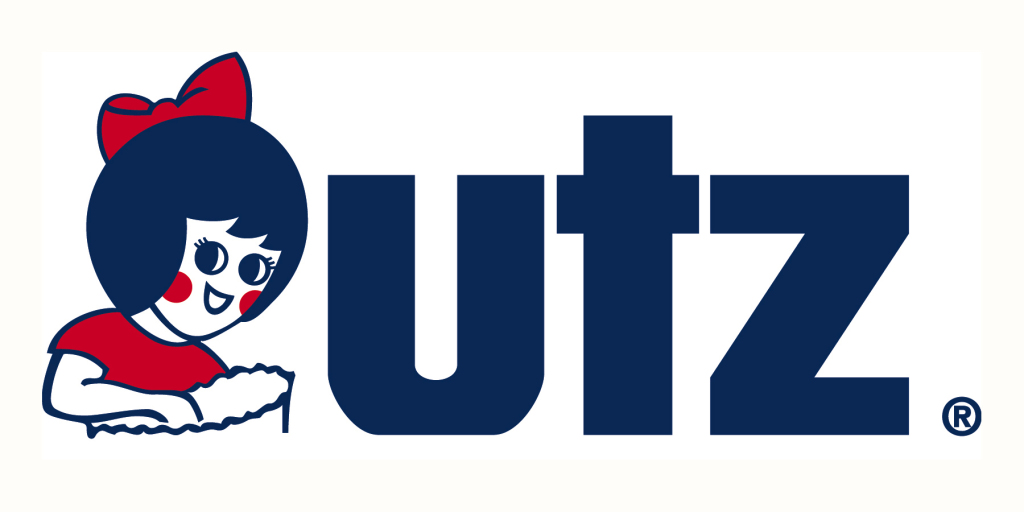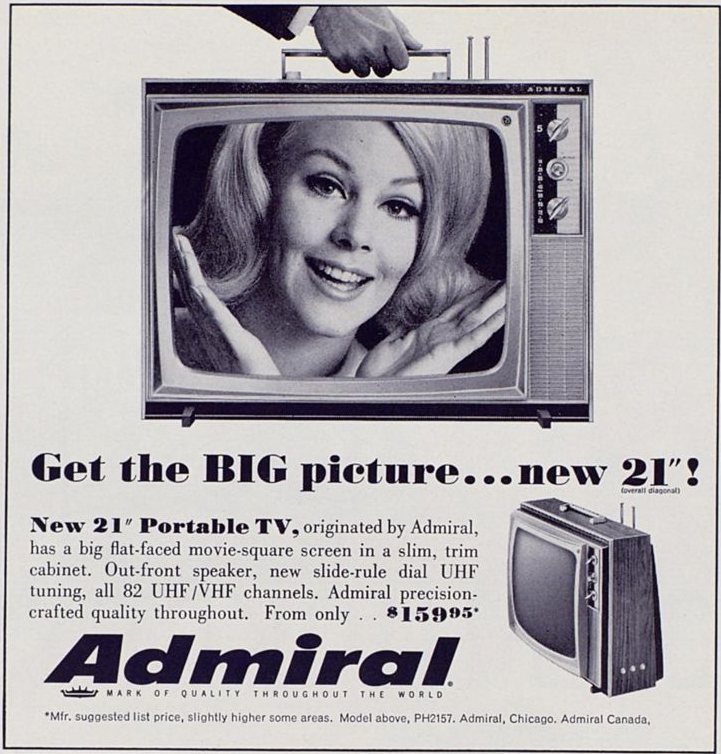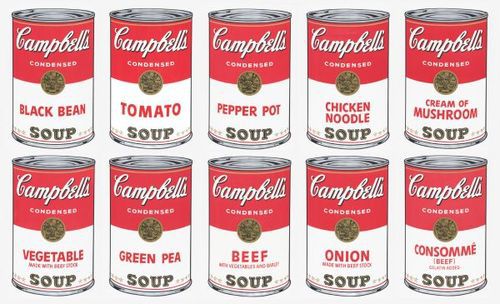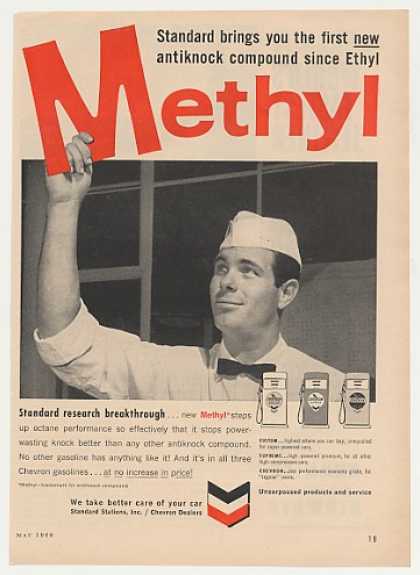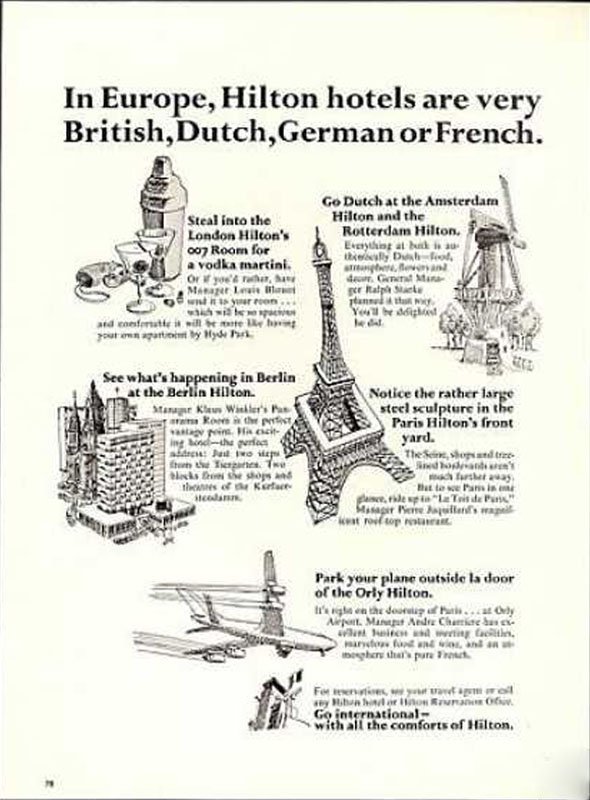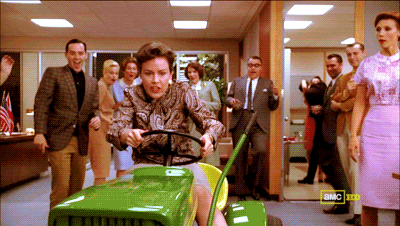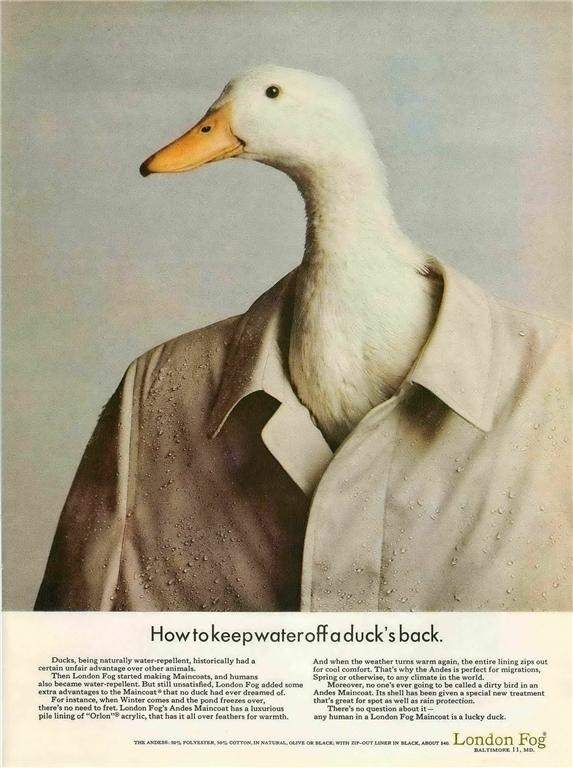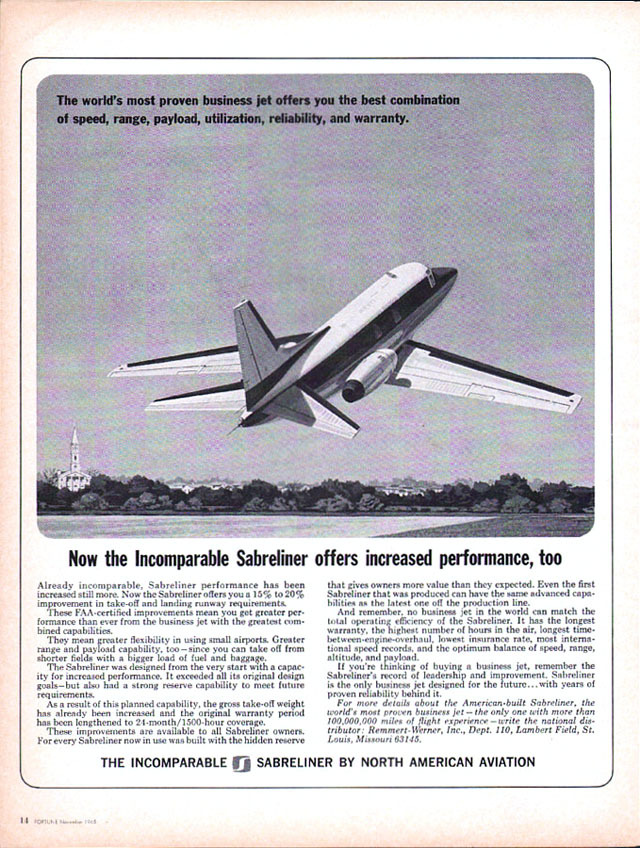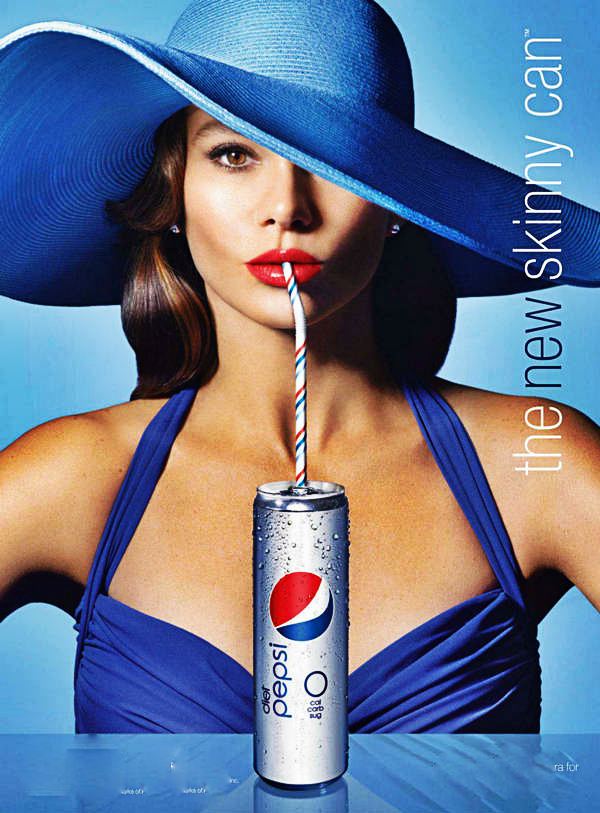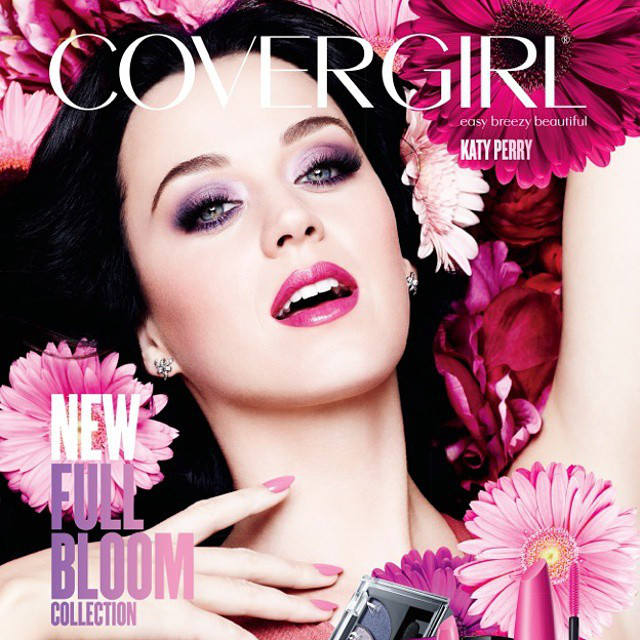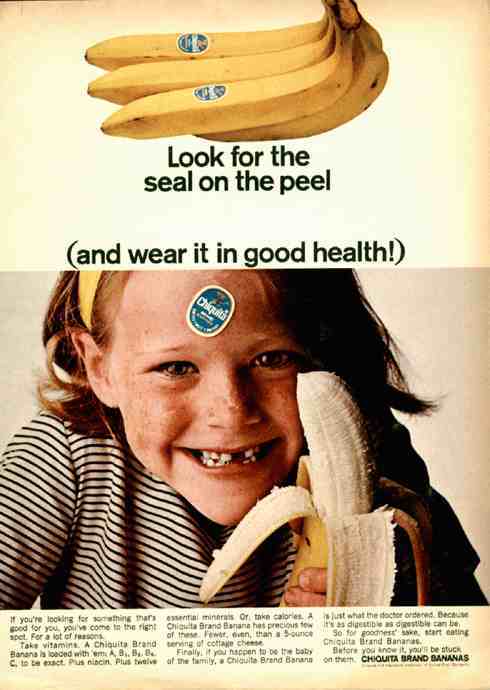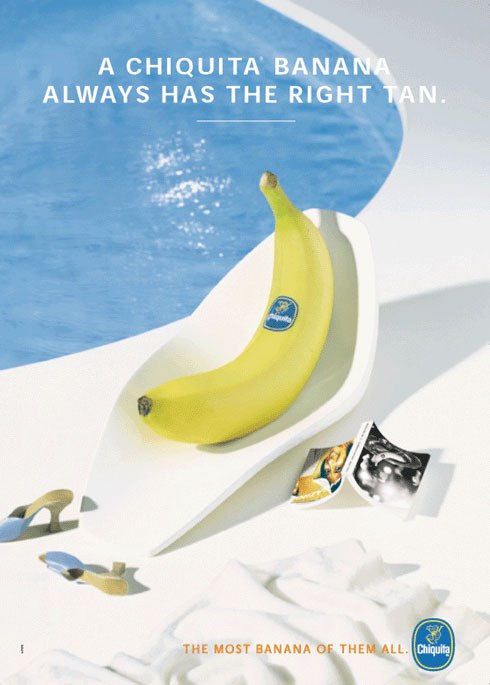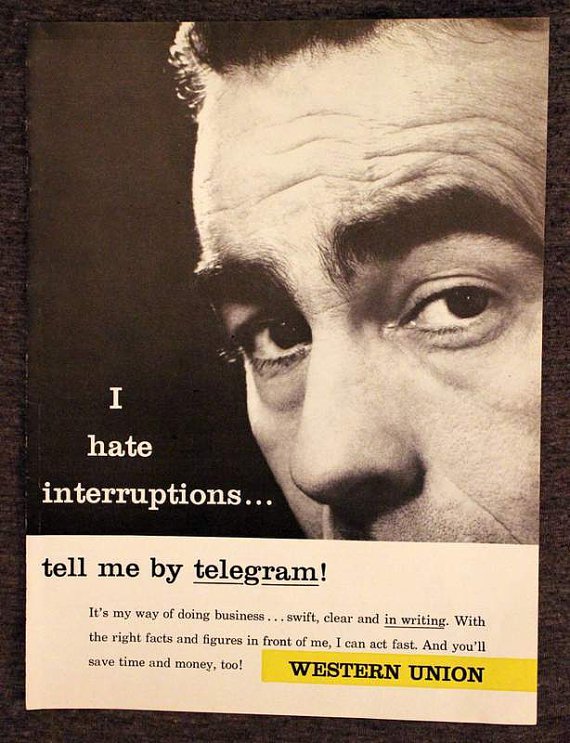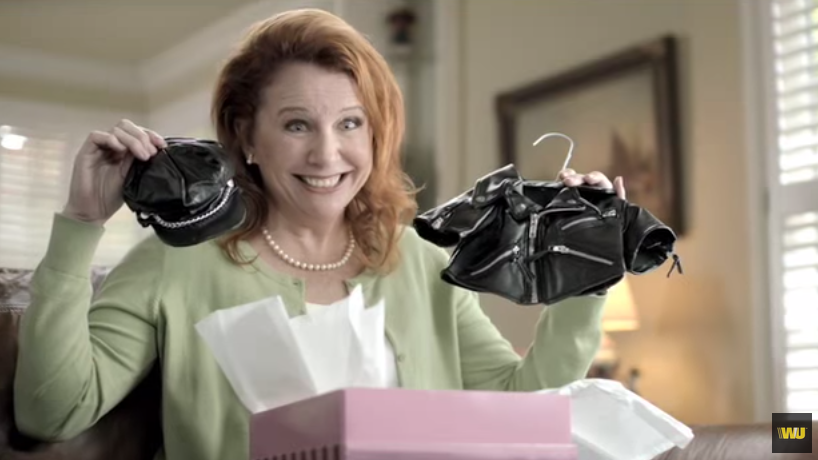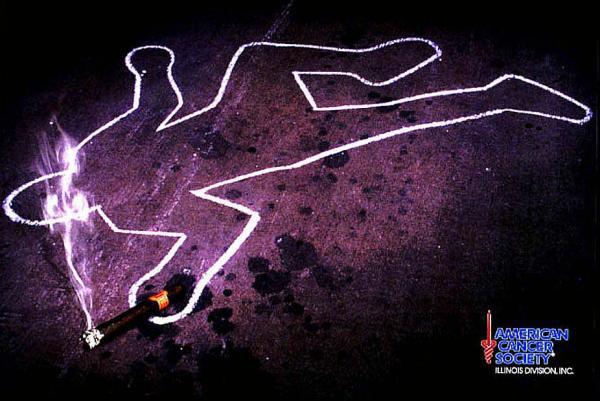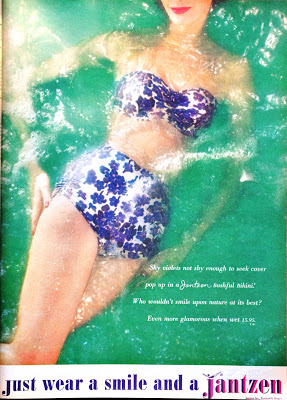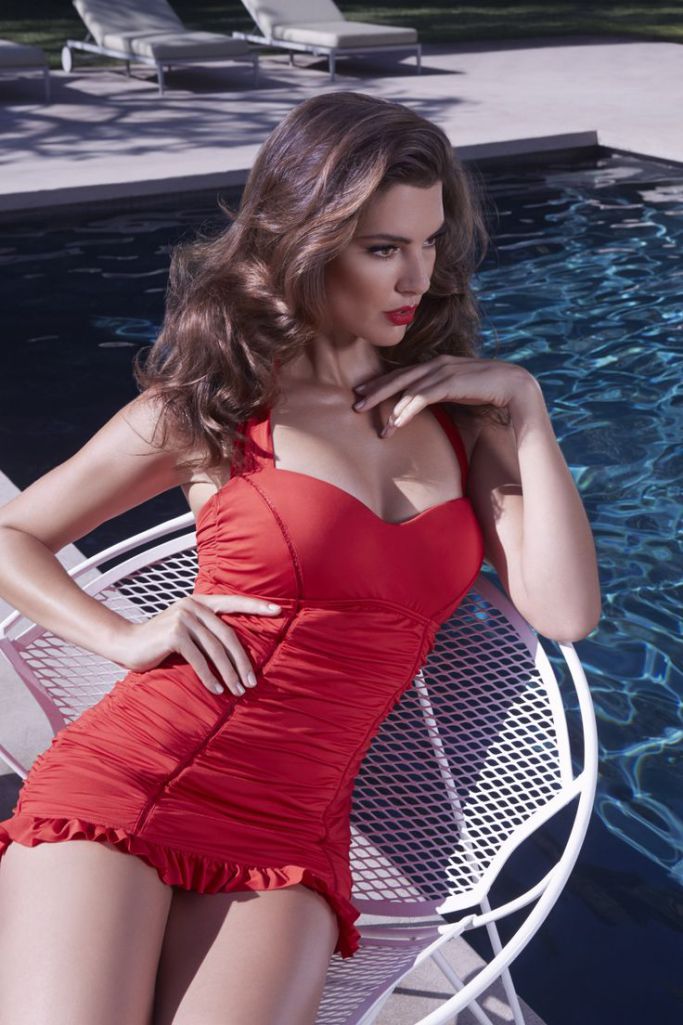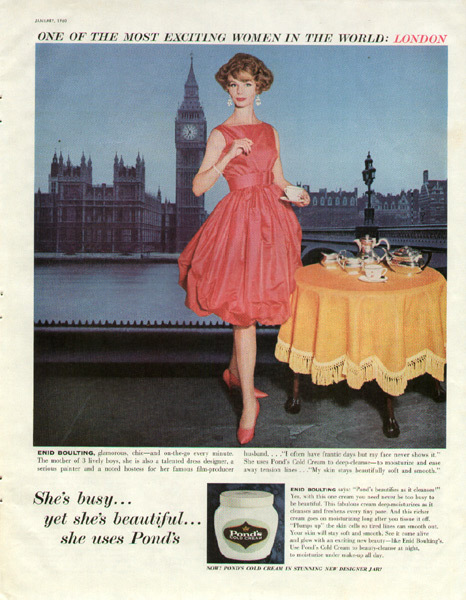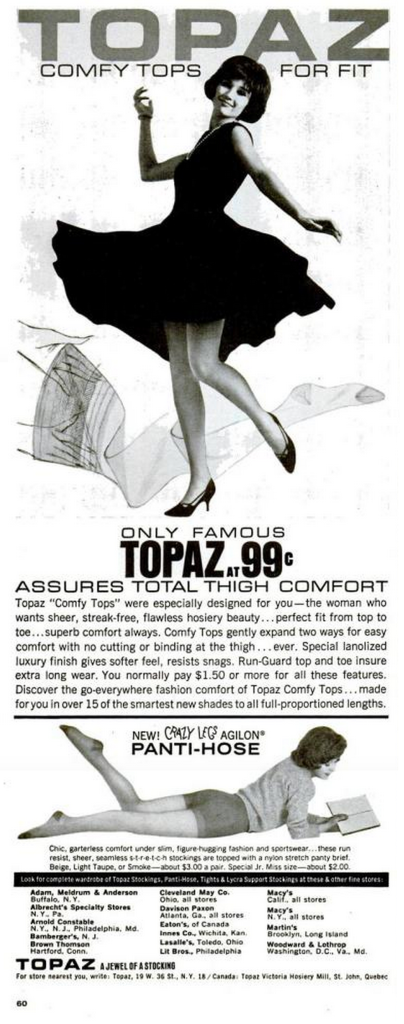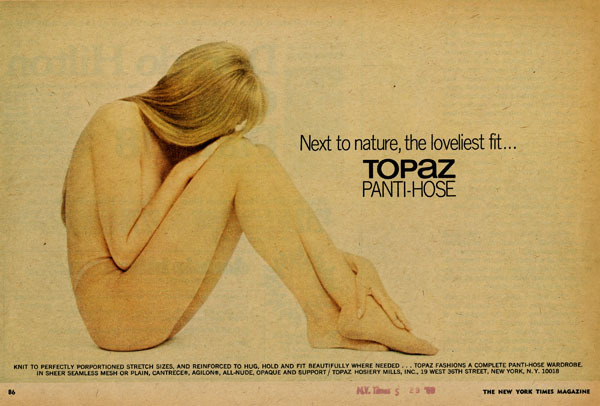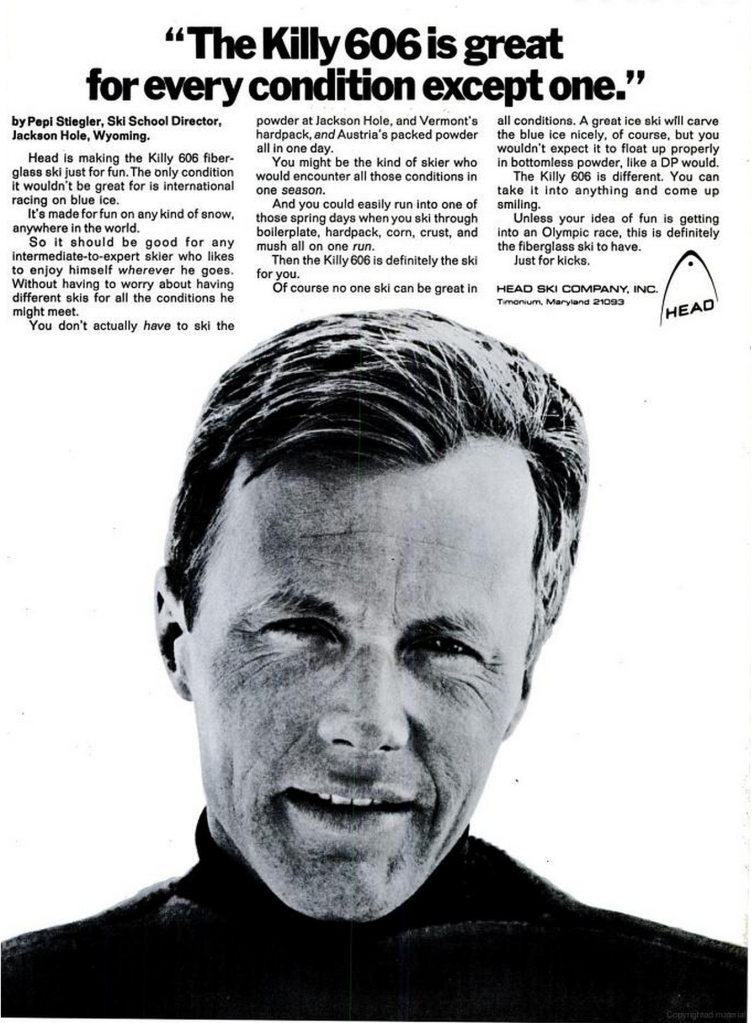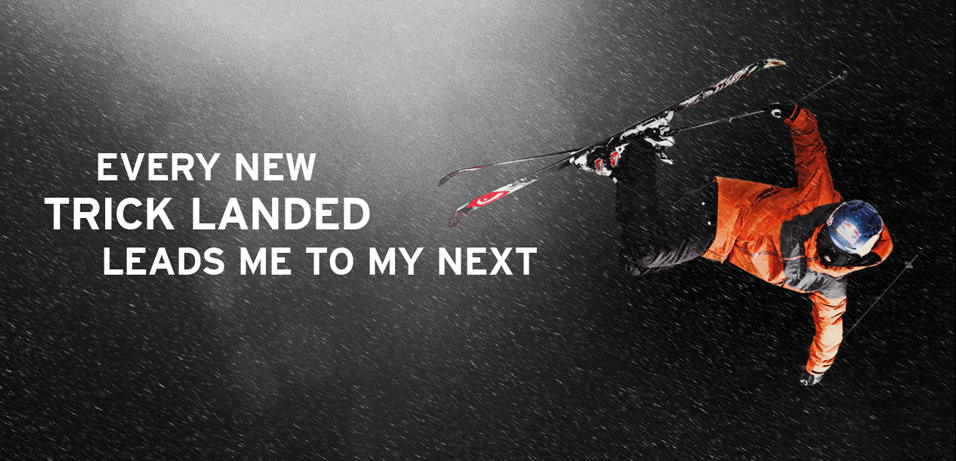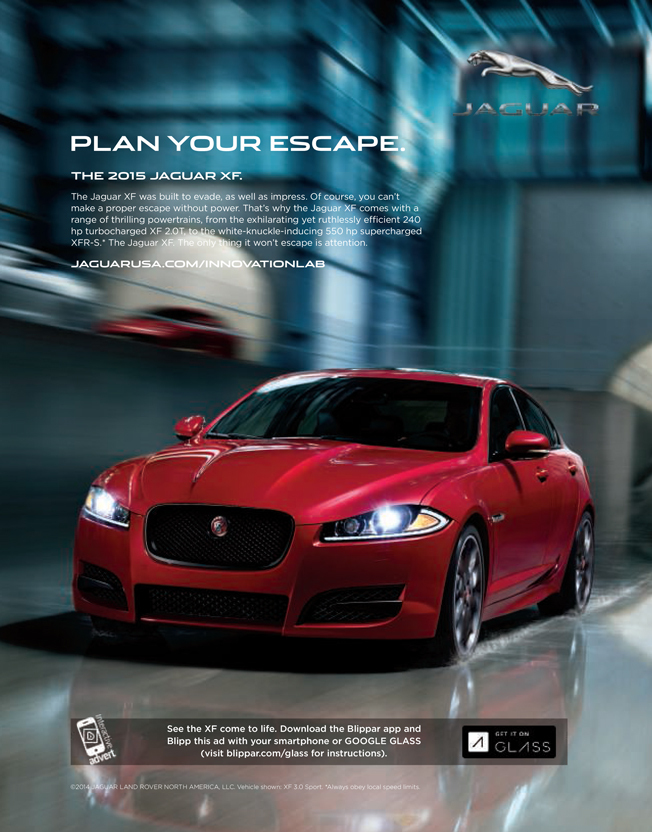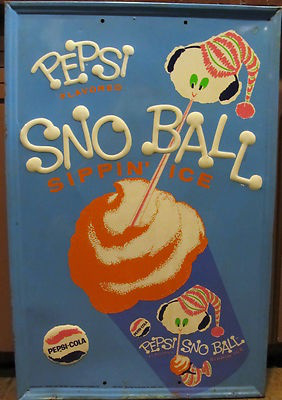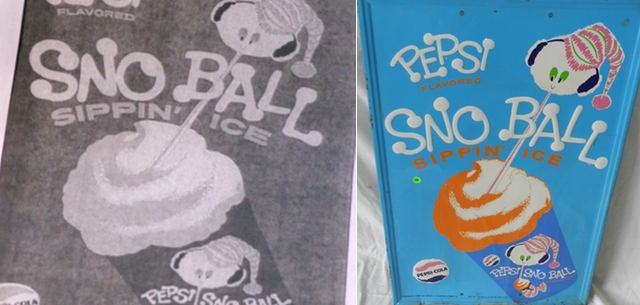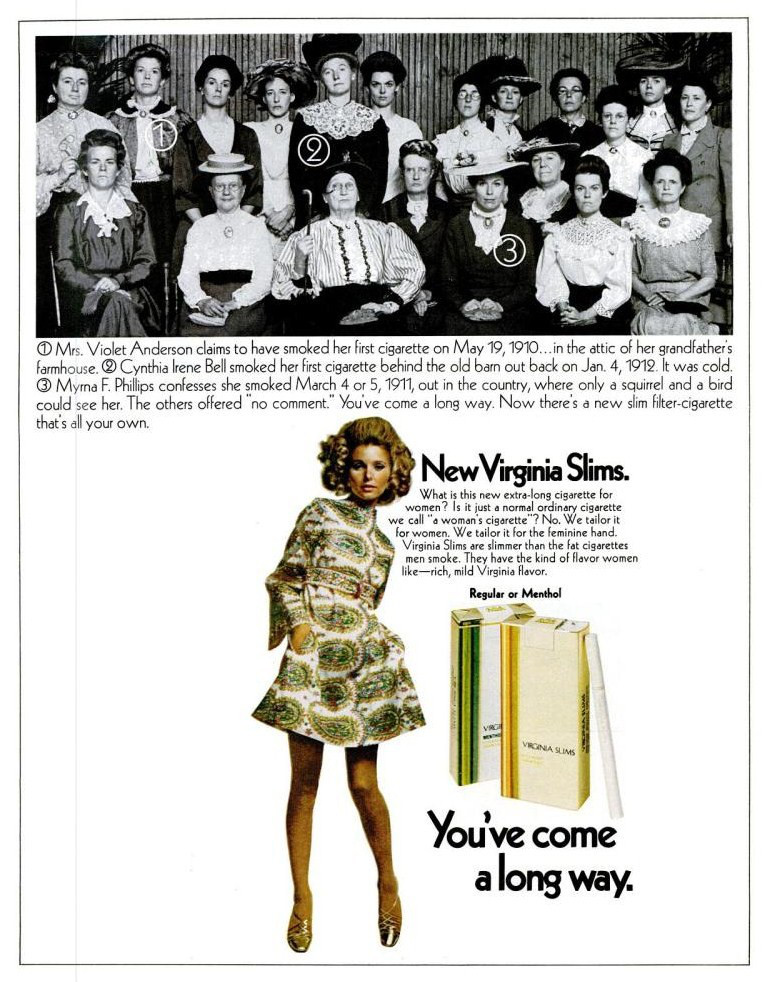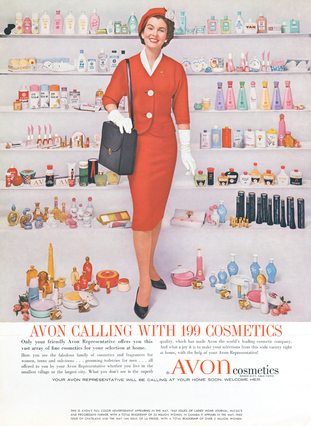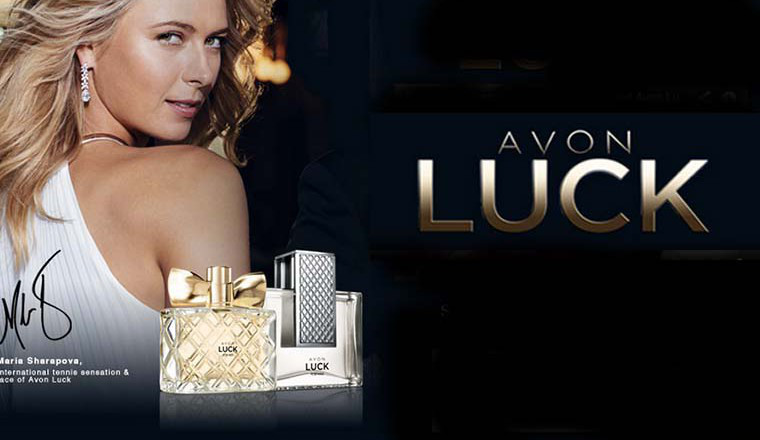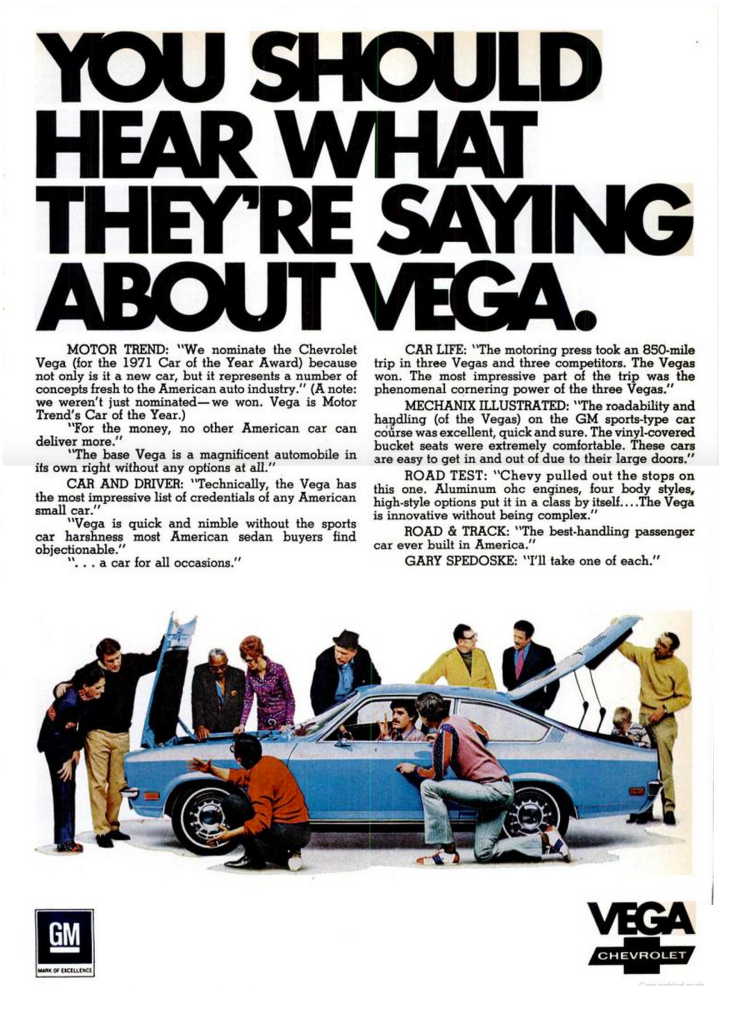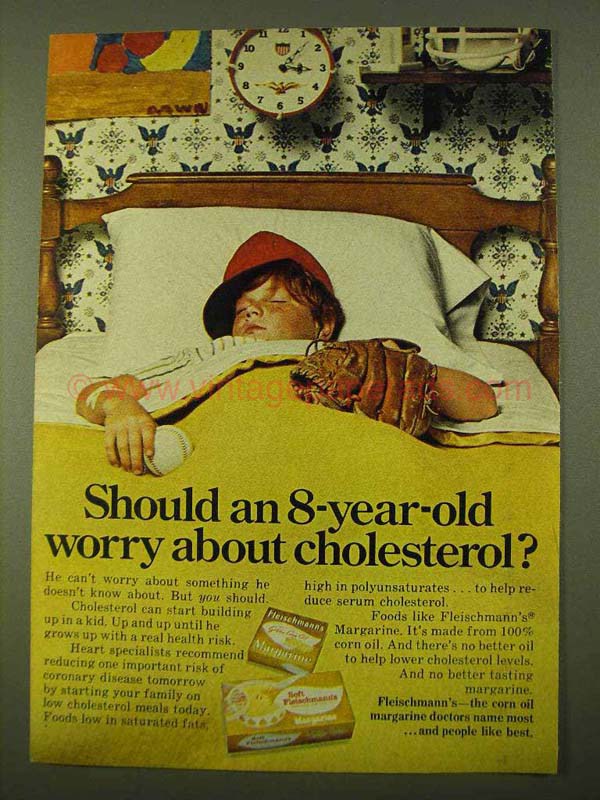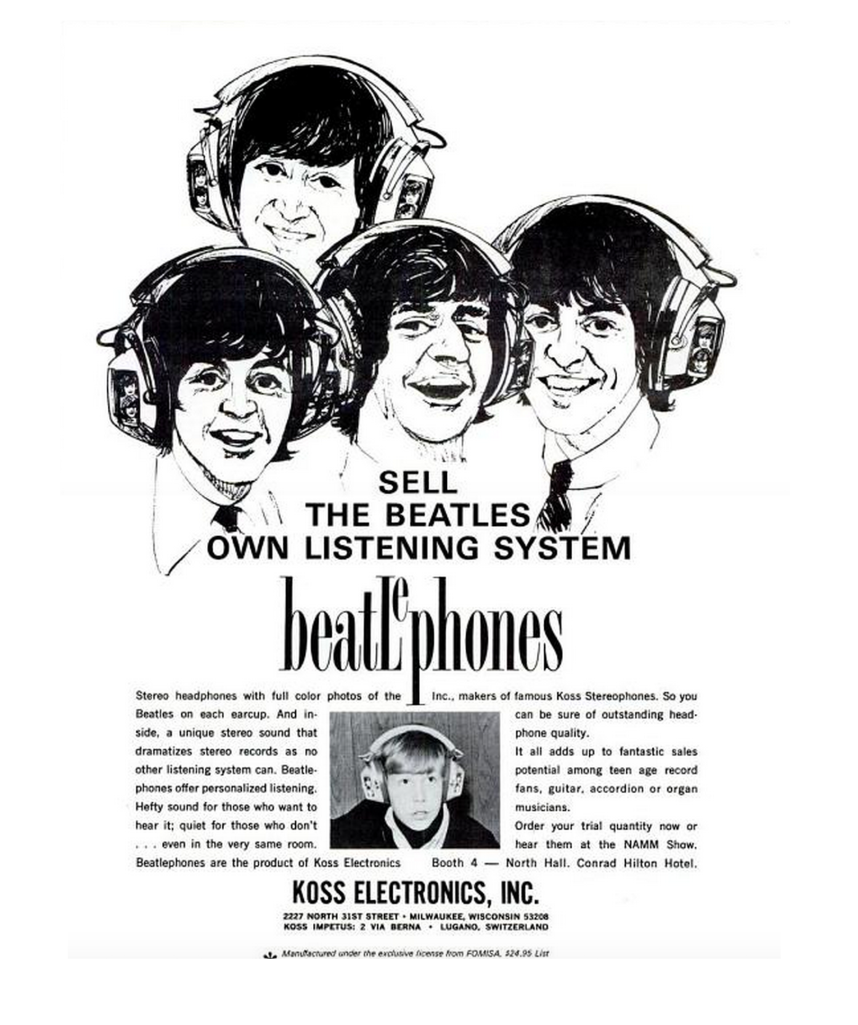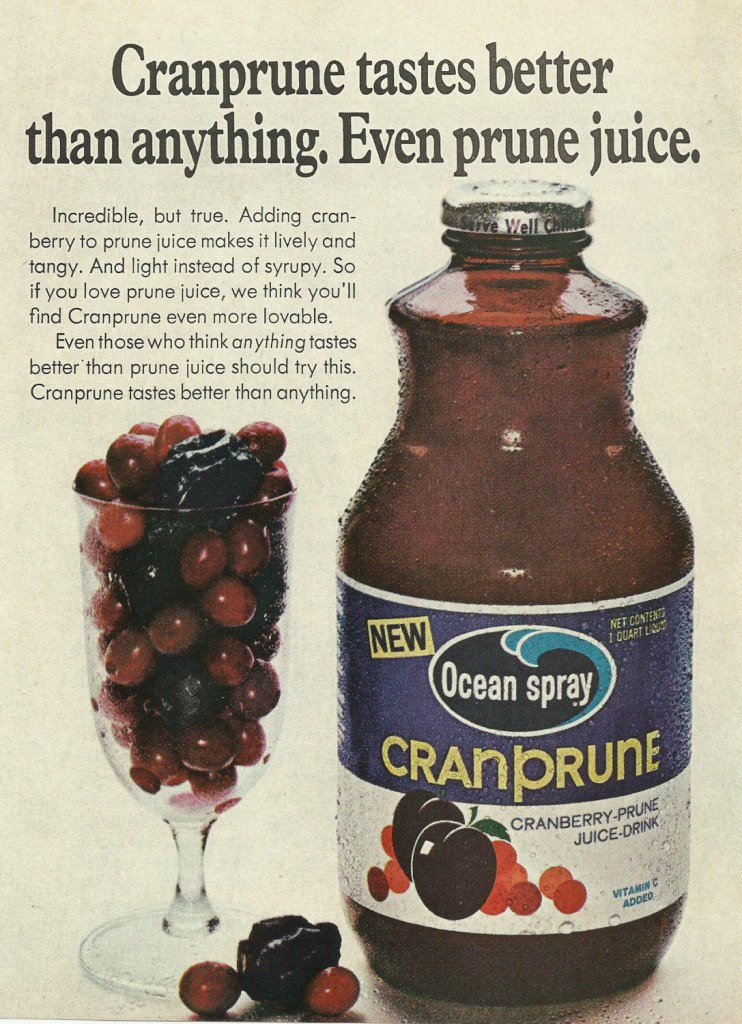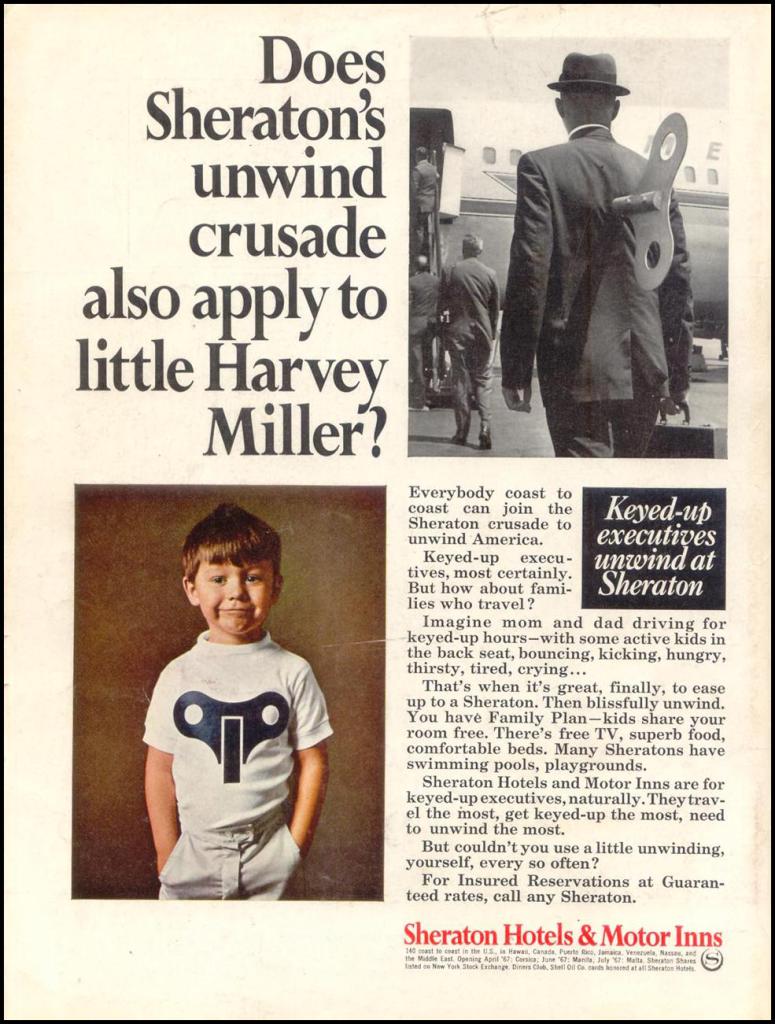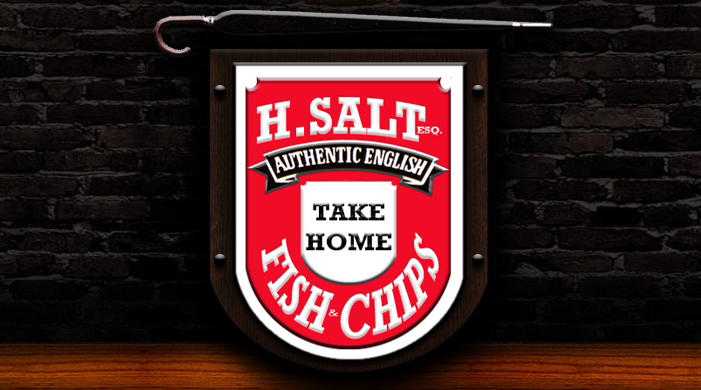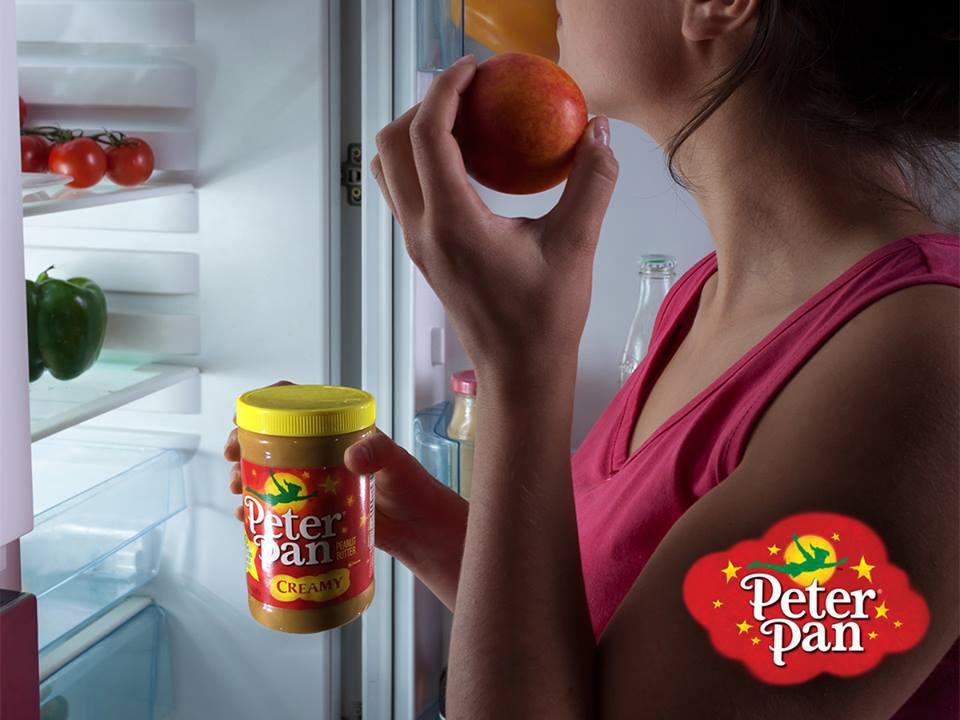That Was Then, This Is Now: How 72 Brands From ‘Mad Men’ Have Changed Since Don Draper Was In Charge Image courtesy of AMC
Because nothing gold can stay, AMC’s popular Mad Men has reached the final episode of its final, seventh season. Over the course of the show, we’ve seen pitches for a multitude of companies, brands, sports, groups and even cities. While some of those brands were created for the show, the large majority were very real — and some continue to exist today. In the spirit of nostalgia, we thought now might be the right time to check in on those products and companies pitched by Sterling Cooper (and its various rebirths), to see which have been lost to the mists of time, and which still remain.
Inspired by a very thorough list from FiveThirtyEight.com last year of all the clients Don Draper ever had, we decided to embark on a quest to see how many of those real companies we could track down, and compare the ads of yesteryear to those of today. And if they aren’t around anymore — what happened to them?
A few disclaimers before you fall down the rabbit hole:
• In the interest of the person’s sanity compiling this information (Oh, hey!), we mostly stuck to national brands, stayed away from local organizations like car dealership associations and avoided overly, intensely complicated mega situations (sorry, General Foods).
• Some entries don’t feature any advertising — that’s because we either couldn’t track it down or confirm those companies ever had advertising, but left on the list for the interest of learning things.
• Yes, there will be spoilers, but no, this isn’t an episode guide explaining what happened on the show, because there are plenty of those out there.
SEASON 1: March 1960 – November 1960
BETHLEHEM STEEL CORPORATION
Then: The steel industry was prospering in the years after World War II, and enjoyed a high point in the late 1950s. At that time, it was manufacturing about 23 million tons of steel per year.
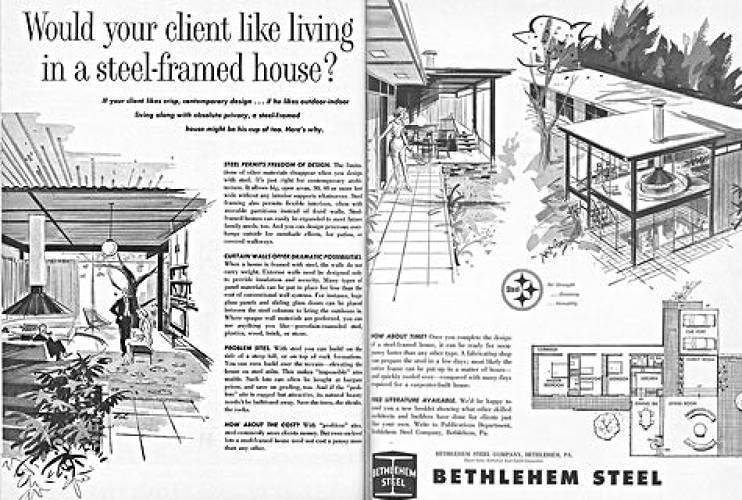
(via Fast Company)
Now: Bethlehem Steel filed for bankruptcy in 2001, after years of the steel industry struggling to keep up with foreign competitors.
CLEARASIL
Then: Created in 1940 as the first brand designed specifically for younger skin to battle pimples, Clearasil was marketed to teens on shows like American Bandstand. In 1960, owner Ivan Combe sold his product to Vick Chemical, as seen on Mad Men.
In this 1960 ad, Clearasil’s tag line is that it “starves pimples.” Sounds rough for the pimples:
Now: Richardson-Vicks and Clearasil were acquired in 1985 by Procter & Gamble. In 2000 Clearasil went to Boots Group, which was purchased by Reckitt Benckiser in 2006.
Things have changed with technology — today Clearasil has its own YouTube page now, of course:
DR. SCHOLL’S
Then: In 1960 Dr. Scholl Inc. would’ve been 54 years old and still owned by its podiatrist creator, William Mathias Scholl. There was no exercise shoe line yet — that wouldn’t come along until 1968 — just products like corn pads, stockings, arch supports and cushions, etc.
Don’t call’em corn pads though, call ’em Zino-pads:
Now: Today there are two different sides of the business — Brown Shoe Company manufactures the Dr. Scholl’s shoe line under a distribution agreement with Merck. The foot care product line is owned by Bayer Group in the U.S., while Reckitt Benckiser owns the brand outside the States.
You might not want be reminded of the “Gellin'” line of commercials, but sorry, here you go anyway:
KODAK
Then: One of the first companies to successfully mass-produce dry plates and put them into the first simple cameras that consumers could use, in 1960 Kodak was on the verge of introducing Kodak Carousel Projectors, which featured a round tray holding 80 slides.
Here’s a version of the earliest ads introducing the idea, with a tag line that even Don would be proud of:
Now: After dominating the photographic film industry for much of 20th century, Kodak has struggled to refine itself in the new era of digital photography and smartphones. To wit: The company claims about $2 billion in annual sales today, compared to the $19 billion it commanded in 1990.
In March 2015, the company told the New York Times it was looking for new ways to use old patents on its technology — but had no big ideas about Kodak-branded products paving its way to a brighter future.
“We’ll never be able to prosecute the value of our intellectual property with Kodak-branded sales,” CEO Jeff Clarke told the NYT.
LUCKY STRIKE
Then: American Tobacco Company owned Lucky Strike in 1960. But that “It’s Toasted!” line that Don appears to come up with during a pitch to Lucky Strike is actually a real one the company used in advertising as far back as 1917. Genius slogan? Maybe, but Don Draper didn’t think of it.
Now: Sold to British American Tobacco in 1976; U.S. rights to Lucky Strike were bought by Brown & Williamson, a favorite of nostalgia driven people. Due to current restrictions on tobacco advertising, it’s doubtful you’ll come into contact with any Lucky Strikes ads, however.
RELAXACIZOR
Then: A product that touted electrostimulation during the 1950s as a way to stimulate the muscles of a relaxing person — “passive exercise,” these products claimed to reduce girth by shocking the muscles with electricity.
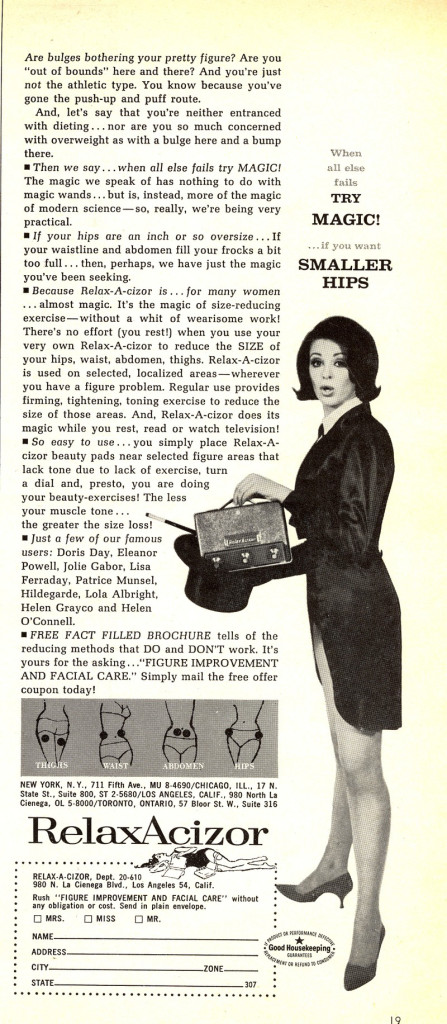
(via Lulu’s Vintage Blog)
Don’t worry, fellas, there’s one for you, too:
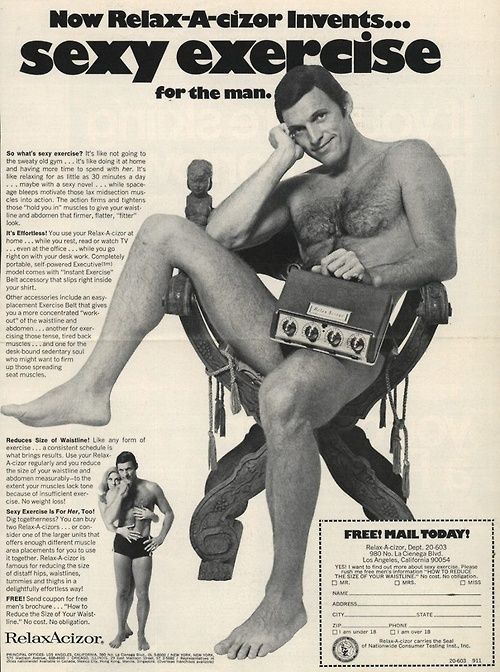
(via Swinging Sixties)
Now: No more lying down with wet pads all over your body — the RelaxAcizor was banned in 1970.
“The involuntary muscle contractions caused by Relaxacizor are abnormal and cannot be equated with ordinary exercise,” found Judge William P. Gray, in United States v Relaxacizor Inc, calling the product “misbranded… in that that its its labeling is misleading because it represents that the device is safe for use by a layman but fails to reveal facts material in the light of such representation, namely, that the device is capable of aggravating many pre-existing conditions and otherwise injuring the user.”
RIGHT GUARD
Then: Right Guard started off as a unisex brand in 1960 from Gillette, as the first aerosol antiperspirant on the market.
Here’s an ad from that era, around 1968:
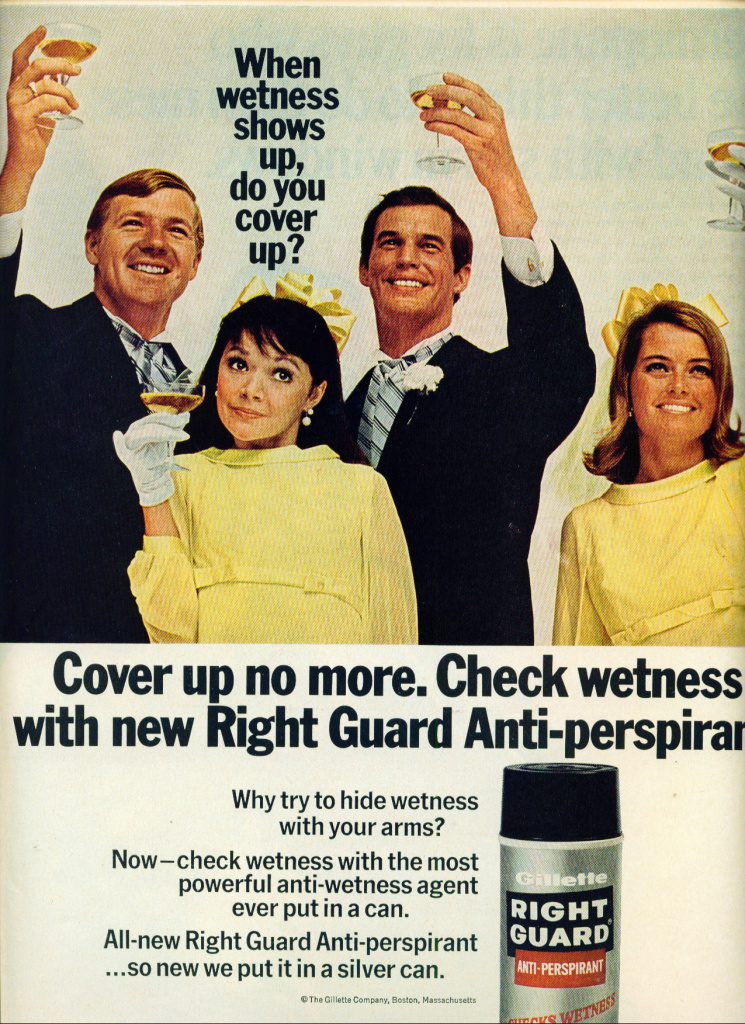
(Tias.com)
Now: Still around but with separate versions for both sexes, Right Guard is now made by the Dial Corporation unit of Henkel North America, with heavy focus on sports activity.
VICK CHEMICAL COMPANY
Then: Though Vick Chemical’s most popular product was Vicks VapoRub, in 1960 the company also marketed other cold products like nose drops, cough drops, toiletries and even prescription drugs.
Now: The company was renamed Richardson-Merrell in 1960 and then to Richardson-Vicks in 1981. Vicks sold the company to Procter & Gamble in 1985 to fend off Unilever, which was seeking to acquire the company.
Season 2: February 1962 – October 1962
HEINEKEN
Then: The first European beer to be imported to the United States after Prohibition ended in 1933, the grandson of Heineken’s founder Alfred Henry “Freddy” Heineken worked at the company during the time of Mad Men and was a powerful force behind Heineken’s global expansion. He might’ve been the one behind those meetings with ad companies. One slogan back then — “Good People Bring Home Heineken.”
Here’s another 1960s era ad:
Heineken’s first TV commercial wasn’t broadcast until 1968 — and it’s in Dutch with funny puppets.
Now: The company touts 250 brands brewed in more than 70 countries, and says on its company site that it’s available in “almost every country on the globe.”
Like many beer companies, many of its ads are aimed at sports fans.
MARTINSON COFFEE
Then: Founded in 1898, the company says rumor has it that the expression “Cup of Joe” came from founder Joe Martinson’s door-to-door deliveries with his cart, bringing people his particularly roasted coffee. In 1962, Andy Warhol featured Martinson Coffee in a silkscreen ink and pencil on canvas, aptly named, “Martinson Coffee.”
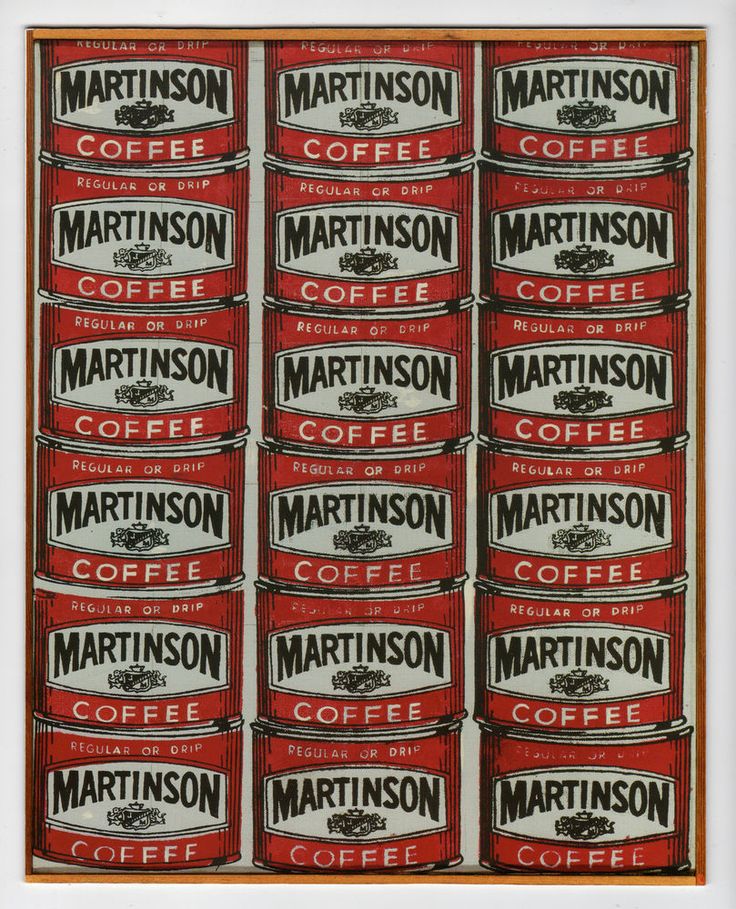
(via ArtNet)
Now: Taglines include “It’s the real Joe” and “You can’t fake real.”
MAYTAG
Then: Founded in 1893 by Frederick Louis Maytag and others, his death in 1962 marked the first time someone outside the family led the company. In 1967, Maytag would introduce its first Maytag Repairman TV commercial:
Now: The Maytag brand has been owned by Whirlpool Corporation since a 2006 acquisition — but the repairman is still around:
MOHAWK AIRLINES
Then: In 1962, the airline was still struggling in the after-effects of a strike in 1960 that grounded its planes for two weeks. The financial effects were felt deeply, leading Mohawk to try borrowing money, to no avail. This is reflected in the show, when the company’s president is having a hard time finding an agency to take the company on. It was eventually acquired by Allegheny Airlines in 1972.
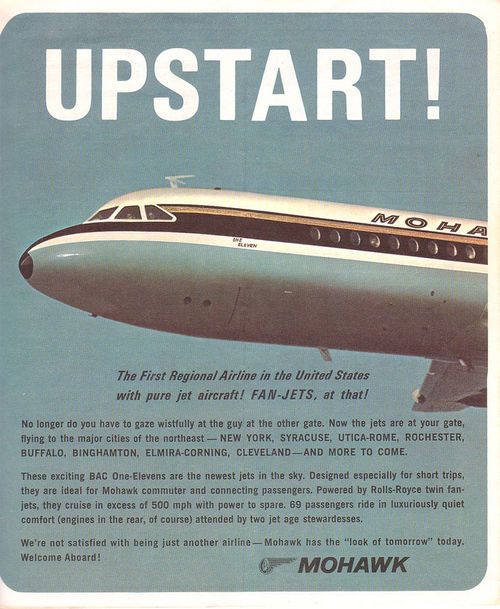
(via Mad Men Confidential)
Now: Allegheny Airlines eventually evolved into USAir and finally, US Airways.
PLAYTEX
Then: Playtex was only 15 years old in 1962, but already had been the first brand to advertise undergarments on national TV in 1955 (though not on a woman’s bare skin, that wouldn’t happen until 1987). While Don and the gang were debating the Marilyn/Jackie question on the show, in real life the industrial division of Playtex was awarded a contract to develop space suits for the Apollo mission to the moon.
Now: Playtex was acquired by Esmark in 1975, then Beatrice foods in 1985 for a year before going to Revlon. It split into two companies in 1988 — Playtex Apparel Inc. and Playtex Products LLC. Playtex Apparel was sold to Sara Lee in 1991 and then to HanesBrands in 2007. In 2013, its former rival Maidenform joined HanesBrands as well.
And these days, women can actually wear bras on TV without national outrage. Joan and Peggy would be proud.
POPSICLE
Then: Popsicle Pete was a popular radio character that told listeners they could win presents by sending in wrappers from Popsicle products to the manufacturers at that time, Joe Lowe Company of New York.
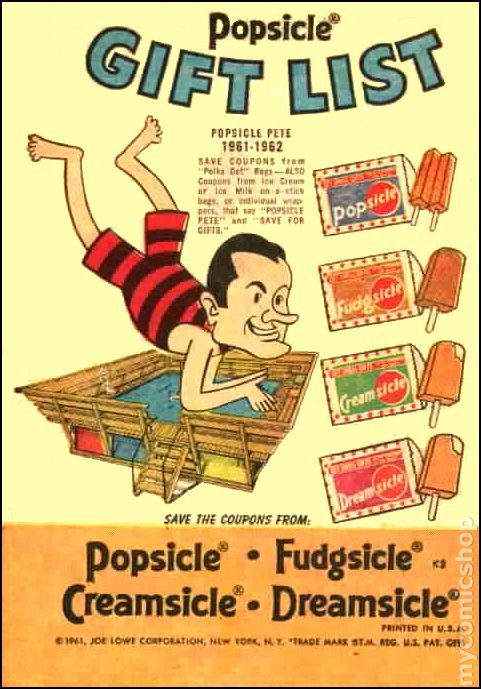
(via MyComicsShop.com)
Now: Good Humor, a subsidiary of Unilever, bought the rights to the name in 1989.
SAMSONITE
Then: Founded in 1910 in Colorado as The Shwayder Trunk Manufacturing Company, the company trademarked Samsonite — named after the biblical Samson it named one of its suitcases after — in 1941. It didn’t formally change its name until 1966. Samsonite was the first to use magnesium and injected-molded plastics to make its Ultra Lite Luggage line in 1956. Before that, suitcases were made using wooden frames.
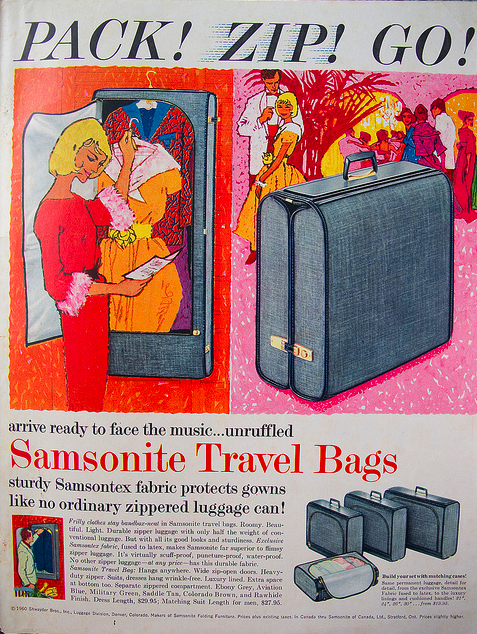
(via ArtNectar.com)
Now: Samsonite International S.A. acquired competing brands like American Tourist and High Sierra to become the world’s biggest luggage maker.
Its ads are still playing up the lightness of the luggage, as seen in this 2015 ad:
SEA & SKI SUNTAN LOTION
Then: Time magazine said in 1961 that it was the “nation’s biggest maker of suntan lotion (its dollar-green Sea and Ski grosses some $12 million a year).”
Now: It’s somewhat of a mystery, as this 2009 BrandlandUsa.com post notes: After going through a string of owners from 1955 on — Botany Industries, Smith-Kline Pharmaceuticals, Faberge, Faulding Consumer (owner of Banana Boat) — the company most recently belonged to Pathfinder Management Inc., which attempted a revival in 2002. It now may just be lost to nostalgia.
UTZ POTATO CHIPS
Then: Founded in 1921 as “Hanover Home Brand Potato Chips”, Utz Quality Foods was 41 years old by the time Sterling Cooper shot ad spots with its fictional celebrity endorser, Jimmy Barrett smirking, “Utz are better than nuts” with his mouth full.
In reality, there was no such endorser or slogan. Instead, the company was known by its red-cheeked cartoon girl with a red bow in her hair reaching into a package of chips. We couldn’t find much else in terms of advertising, which perhaps is what made it such an attractive product to write a storyline around — if there’s nothing to compare the fiction to, it’s that much more believable.
Now: Still based in Hanover, PA, Utz is the largest independent privately held snack brand in the United States. Still no wise-cracking endorsers, and the cartoon girl has stayed around on packaging. Again, it doesn’t seem like Utz does much by way of advertising now, either.
Season 3: March 1963 – December 1963
ADMIRAL TELEVISIONS
Then: Admiral started out as Continental Radio and Television Corp. in 1934, and was one of the major television manufacturers during TV’s early days. It did well selling TVs, allowing the company to branch out to refrigerators and other things by the 1950s.
Now: The company’s various divisions were sold off by the 1970s in the heyday of consumer electronics made in Japan. The company was bought by Rockwell International, selling the appliance operations to Magic Chef which was later sold to Maytag, which, was then acquired by Whirpool. Admiral is now an appliance brand, manufactured by Whirlpool Corporation and sold at Home Depot.
BACARDI RUM
Then: Bacardi was already 100 in the 1960s, when Peggy and the gang were sipping it all weekend in an attempt to find inspiration, before turning to marijuana. The men at least, might’ve liked a real Bacardi ad from those days.
Now: Still around today in various flavors that may or may not be advisable if you aren’t a 21-year-old with nothing to lose, Bacardi Limited is the largest privately held, family-owned spirits company in the world, according to the company’s site.
And now you don’t even have to mix your own mojitos:
BIRDS EYE
Then: The company that started as Birdseye Seafoods in 1922 was famous for founder Clarence Birdseye’s vision of flash-freezing vegetables, who came up with the idea after traveling through the Arctic and seeing Eskimos using ice, wind and temperature to freeze fresh fish almost instantly. Captain Birds Eye, a white-bearded seaman, debuted as the company’s mascot in its first TV commercial in 1967.
Now: Went through various owners including General Foods, Kraft Foods, Philip Morris USA, Dean Foods and then Birds Eye Foods again before Pinnacle Foods bought it in 2009.
Must admit, this recent ad is sorely lacking in Captain Birds Eye-ness.
CADBURY
Then: This brand didn’t get much actual play on the show, as it was just included in a list of clients rattled off as belonging to Pete and Ken, as part of the merger with PPL. The company’s roots date back to 1824 when John Cadbury sold drinking chocolate along with tea and coffee at his Birmingham, England shop.
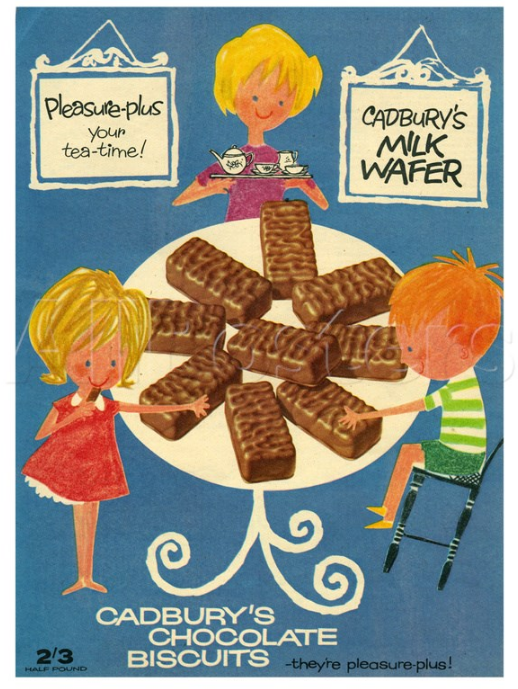
Now: After merging with Schweppes in 1969, Cadbury was eventually bought by Kraft Food Groups in 2010 and now Mondelez International, is the second largest confectionary brand in the world after Wrigley’s.
CAMPBELL’S SOUP
Then: Campbell would’ve been pretty huge in 1962, almost 100 years after its founding in 1869, as it’s the year Andy Warhol first painted those famous cans. The company had been using “Mmm mmm good” since 1935.
Now: Called either Campbell Soup Company or Campbell’s today, its products are sold in 120 countries around the world and is divided into three divisions — soups, baked cakes (like Pepperidge Farm) and health beverages like V8 juices.
This handsome guy sure knows how to talk about soup.
CHEVRON OIL
Then: Chevron started with the Pacific Coast Oil Company back in 1867, and in 1961 merged with Standard Oil.
Now: Chevron merged with Texaco in 2000, acquiring it for $45 billion, Chevron ended retail operations in the Mid-Atlantic United States, taking off the Chevron and Texaco names from 1,100 stations.
And nowadays, cars talk.
DUNKIN’ DONUTS
Then: The doughnut company founded in 1950 would’ve been just a baby in 1962, competing with Mister Donut as its biggest rival back then. Fred the Baker, otherwise known as “Time To Make the Donuts” guy wouldn’t show up on the scene until 1982.
Now: As of 2014, Dunkin’ Donuts is owned by Dunkin’ Brands Inc., which also owns Baskin-Robbins, headquartered in Massachussetts. “America Runs on Dunkin’” is its slogan, with a redesigned logo appearing in 2006.
GILLETTE
Then: King C. Gillette patented the first safety razor in 1904 that meant men didn’t have to send straight edge razors to the barber for sharpening. A new president in 1938 increased the Gillette Company’s advertising budget by 50%, and started pouring money into sports broadcasts after the major success of sponsoring the 1939 World Series. It’s remained the event’s sole or main sponsor since 1964.
Here’s an ad from the Mad Men days, with the tagline “The closest thing to a perfect shave”:
Now: One of its most memorable recent slogans, “The Best a Man Can Get” was introduced was launched during Super Bowl XXIII in January 1989. As of 2005, Gillette became part of Procter & Gamble.
These days, Gillette knows it has to fight the beard.
GORTON’S
Then: Gorton’s of Gloucester was founded in 1849, and was the first to develop a frozen convenience food — Gorton’s Fried and Frozen Codfish Fillets. It came out with Gorton’s Fish Sticks in 1952, but we weren’t able to find good example of advertising back then.
Now: The Gorton’s Fisherman didn’t appear on the scene until 1975, along with the phrase “Trust the Gorton’s Fisherman.” Gorton’s of Gloucester changed its name to the Gorton Corporation, and merged with General Mills in 1968. It was bought by Unilever in 1995, which then sold it to Japanese seafood conglomerate Nippon Suisan Kaisha, Ltd.
HILTON NYC
Then: Hilton Hotels was born on in 1925 when Conrad N. Hilton opened the first hotel with the family’s name on it in 1925 in Texas. By 1964, Hilton International formed as a separate company. It was acquired by Trans World Airlines in 1967. Historian Mark Young from the University of Houston told the Houston Chronicle that in 1963, Conrad Hilton actually was shopping for a new advertising agency, just as he was on Mad Men.
Now: Celebutante sex tapes and misbehaving members of the family aside, the company is now known as Hilton Hotels & Resorts with more than 500 hotels worldwide. All Hilton hotels are either owned by, managed by or franchised to independent operators by Hilton Worldwide.
JAI ALAI
Then: Though the Jai Alai obsessed Horace J. Cook didn’t really exist, gambling on jai alai instead of dog racing or horses was popular in the 1960s. If there was an advertising agency for the sport, we weren’t able to find it.
Now: Though the sport still doesn’t enjoy much interest in the U.S. as it does elsewhere in the world, it’s still popular in Florida — the first public amateur jai alai facility was built in the United States in 2008, in St. Petersburg, FL.
JOHN DEERE
Then: John Deere marked its 125 anniversary in 1962, and in 1963 became the world’s largest producer and seller of farm and industrial tractors and equipment. The company decided to dip its toes into the consumer market as well, producing and selling lawn and garden tractors, as well as mower and snow blower attachments. It’s unclear if using a tractor in an office ever cut someone’s toes off.
Now: Deere & Company is still around to this day, selling equipment with the slogan, “Nothing Runs Like a Deere.” The company also wants to be able to file copyright claims against the way you use your tractor.
LEVER BROTHERS
Then: There really was no Lever Brothers by 1963 — A British manufacturing company founded in 1885 that made soap using a new process that used glycerin and vegetable oils instead of tallow, it merged with Dutch margarine company Margarine Unie to form Unilever in 1930. Lever Brothers changed its name to Unilever PLC at that point and formed the British half of the company.
Now: Unilever its still a British-Dutch multinational consumer goods company with more than 400 brands under its umbrella, including Dove, Ben & Jerry’s, Popsicle, Lipton, Noxzema and others.
LONDON FOG
Then: Founded in 1923 as Londontown clothing company, the London Fog brand came to be in 1954. Real life adman Richard Gilbert, author of Marching Up Madison Avenue, took issue with Mad Men’s 1963ish portrayal of London Fog in 2009 when the brand was featured in season three. He wrote to AdAge at the time, saying in part that contrary to being the “tired, 40-year-old company whose advertising was in trouble,” with Don and the team swooping in with a company-saving ad idea, it was nothing of the sort.
“London Fog was not a tired, 40-year-old brand at the time, as it was launched in 1954 when it changed from Londontown Clothes, a Baltimore men’s clothing manufacturer, to its current brand title and rainwear emphasis. Gilbert Advertising handled the brand through the ’60s and built a body of work that was acclaimed for its creative brilliance and brand dominance. London Fog’s 65% Dacron/35% cotton fabric was the soul of the rainwear industry, and in 1960 the company was at the beginning of its advertising ascendency.”
Now: After going public in the 1960s, London Fog was bought by Iconix Brand Group in 2006, licensing the outwear business to Herman Kay Company.
Celebrities (Neil Patrick Harris and husband David Burtka) have now replaced ducks:

MADISON SQUARE GARDEN
Then: There have been a few MSG’s in New York City. By the early 1960s, Manhattan was on its third venue on Eighth Avenue between 49th and 58th Streets. It wasn’t long for that location, as seen in Mad Men when plans were underway for its current spot above Penn Station on Seventh Avenue and 32nd Street. It was demolished in 1968 after the opening of the current MSG, above the bones of the old Penn Station.
Now: The current MSG has been standing since Feb. 11, 1968, and is home to the New York Knicks NBA team, New York Liberty WNBA team and the New York Rangers NHL team. The executive chairman of the Madison Square Garden Company is James Dolan, who also happens to be President and CEO of Cablevision. He gets to open for the Eagles at MSG whenever he wants.
NORTH AMERICAN AVIATION
Then: A major aerospace manufacturer, The Aerospace Legacy Foundation says that between 1935 and 1967, North American Aviation built more military aircraft than any other airplane maker in U.S. history. In the 1960s, CEO Lee Atwood moved the company’s voce on the space program, and NAA became the prime contractor for the Apollo Command/Service Module, a rocket to test Apollo’s launch escape system, and the second stage of the Saturn V. The Apollo 1 fire in January 1967 was partly blamed on the company.
Now: NAA no longer exists. After merging in March 1967 with Rockwell-Standard, the new company became known as North American Rockwell, and then later, Rockwell International. Through a series of mergers and sales, it was eventually absorbed into Boeing.
PAMPERS
Then: Pampers would’ve been a baby company during the first few seasons of Mad Men: Born in 1961 after a Procter & Gamble researcher who didn’t like changing cloth diapers assigned his fellow researchers to design a better disposable diaper, Pampers was a name coined by Alfred Goldman, Creative Director at Benton & Bowles, the first ad agency for the account.
Now: Still one of P&G’s brands, Pampers faced lawsuits in recent years over its DryMax diapers, settling claims that the diapers caused sores, rashes boils and other things babies do not want on their private bits.
PATIO SODA
Then: Patio Diet Cola was a brand of diet cola introduced by PepsiCo in 1963, created to rival Diet Rite. Though no-calorie colas were first marketed to diabetics, companies like Royal Crown (behind Diet Rite) and Pepsi realized they could target women trying to stay slim instead. Patio diet cola became Diet Pepsi in 1964, with Patio flavors like orange and root beer getting phased out by the mid 1970s.
Now: Diet Pepsi is now available on a global scale, though companies PepsiCo and Coca-Cola are finding it increasingly difficult to keep sales of soda up in the face of changing consumer trends.
PROCTER & GAMBLE
Then: P&G was founded in 1837 by William Procter and James Gamble, the company’s first product was Ivory Soap. By the 1960s P&G had a healthy roster of brands any ad agency would be dying to get a piece of, including Tide, Crest and Pampers.
Now: Though the company shed a bunch of mostly minor brands in 2014, the company held on to “70 to 80” of its core brands, including Bounty, Cover Girl, Prilosec, Pantene and Swiffer, among others.
RIO DE JANEIRO
Then: Cities like Rio De Janeiro often turn to advertising agencies to help boost tourism and attract business. In the 1960s, Rio De Janeiro was still enjoying its status as a good place for companies after hosting state-owned businesses while it was the capital of Brazil. After the capital moved to Brasilia in 1960, companies kept coming to the city, especially after the discovery of oil in the Campos Basin.
Now: Rio De Janeiro was one of the host cities of the 2014 FIFA World Cup, and will host the 2016 Summer Olympics.
SNIDER’S CATSUP
Then: There isn’t much out there about Snider’s, but it appears to be from the T.A. Snider Preserve company, which was founded in Cincinnati in 1879 before moving to Chicago in the 1920s. It made various products including catsup, soups, and pork and beans, and had been bought and sold off by the Birds Eye division of General Foods by the time it appeared in Mad Men times, when it appears that it became Snider Foods Inc.
In any case, there was catsup on TV.
Now: Snider Foods. Inc. was dissolved in New York in 1985.
UNITED FRUIT
Then: An American corporation founded in 1899, United Fruit traded in tropical fruit, mostly bananas, and sold them in the U.S. and Europe. It was often widely criticized for maintained a virtual monopoly in certain regions, some of which became known as banana republics.
In 1963, the company’s Chiquita brand had been around since 1947. The company says that year it “began the largest branding program ever undertaken by a produce marketer, accompanied by a record-breaking ad campaign which included affixing the trademark blue sticker to bananas: ‘This seal outside means the best inside.’
Now: Exists as Chiquita Brands International, whose company site does mention the years of unrest in the past: “Although Chiquita’s history includes storied moments in its past, the company now proudly focuses on extending labor rights, protecting our environment and investing in the communities in which we live and work.”
WARNER BROTHERS
Then: The entertainment company had been around for about 40 years by the time of Mad Men, making movies as it still does today. Ads would’ve been movie-centric.
Now: The company says its library consists of “more than 61,000 hours of programming, including nearly 6,500 feature films and 3,000 television programs comprised of tens of thousands of individual episodes.” Again, most advertising done by the company today is trailers.
WESTERN UNION
Then: Founded as the New-York and Mississippi Valley Printing Telegraph Company in 1851, Western Union was already more than 100 years old in the time of Mad Men, when people still sent telegrams, ostensibly to share funny things their cats were doing.
Now: Telegrams are out, and sending money is in. We’d embed a recent commercial from the company about sending money so your loved ones can buy your cat new outfits, but it’s un-embeddable so here’s the link.
Season 4: November 1964 – October 1965
AMERICAN CANCER SOCIETY
Then: On January 11, 1964, U.S. Surgeon General L. Terry released the first U.S. Surgeon General’s Report on Smoking and Health after working with the American Cancer Society, the American Heart Association and other health groups to take on “the smoking question.”
Terry chose to release it on a Saturday, to minimize the effect on the stock market and to maximize coverage in the Sunday papers. He remembered two decades later that the report “hit the country like a bombshell. It was front page news and a lead story on every radio and television station in the United States and many abroad.”
Naturally, this had cigarette makers scared, and they would’ve definitely turned to ad agencies to minimize the report’s effects.
Now: The American Cancer Society says today that 50 years of anti-smoking efforts have saved 8 million lives. In January 2015, the group hired DDB Chicago as its lead advertising agency, to continue that work.
DOW CHEMICAL
Then: Founded in 1897, Dow Chemical originally only sold bleach and potassium bromide, before branching into agricultural chemicals. Dow opened a consumer products division beginning with Saran wrap in 1953, and by 1964 had sales exceeding $1 billion based on its growing chemicals and plastics businesses. The company also happened to produce napalm, which made it a hot topic during the Vietnam War.
Now: Dow Chemical is still headquartered in Midland, MI, and has a variety of subsidiary companies.
GLO-COAT FLOOR WAX
Then: Launched as an S.C. Johnson & Son brand in 1932, Glo-Coat floor wax ads weren’t as slick as the one Don won an award for on Mad Men.
Now: Glo-Coat no longer exists — S.C. Johnson discontinued it in 1998 “as floor care options grew and consumer choices changed.”
JANTZEN
Then: “The new Jantzen advertising campaign titled ‘Just Wear a Smile and a Jantzen’ took the country by storm,” the company says on its web site. But on the show, company executives were not okay with the racy ad Sterling Cooper presented, and Don and the gang didn’t land the account.
Now: Bought by Perry Ellis International in 2002, called Jantzen Apparel.
LIFE CEREAL
Then: A Quaker Oats cereal brand introduced in 1961, Life’s famous “Mikey Likes It” ads were still about eight years away in 1964. Instead, the brand focused on being a “healthy” breakfast, as other cereals were much more sugary. “The Most Useful Protein” was thankfully replaced as a slogan in 1972 with Mikey.
Now: The cereal’s current slogan is, according to Wikipedia (though we couldn’t find any current TV ads running recently on YouTube), “Life is full of surprises.” Don? Are you there? Peggy? Anyone? Quaker Oats is also owned by PepsiCo, as of 2001.
MOUNTAIN DEW
Then: The original formula for Mountain Dew was created by Barney and Ally Harmtan in the 1940s, medical scientists who were on the hunt for a cure for all the things that ailed people. The drink got a new formula in 1958 and was bought by PepsiCo in 1964. Mountain Dew’s first TV ad featuring a hillbilly saying, “Ya-Hoo, Mountain Dew! It’ll tickle your innards!” aired in 1965.
Now: Old is new again — “Do the Dew” is still Mountain Dew’s — excuse me, Mtn Dew’s mainstay slogan.
The company is also shilling Dew Shine these days, made with real sugar — and the hollerin’ hillbilly is back.
POND’S COLD CREAM
Then: Patented as a medicine by pharmacist Theron T. Pond in 1846, the company he started merged in 1955 with Chesbrough Manufacturing Company. The company first used its iconic “tulip” logo in the 1960s.
Wait… busy AND beautiful? Amazing.
Now: Currently owned by Unilever, as of 1987, Pond’s is still on the market with various products, including Pond’s cold cream cleanser.
In 2008, a series of commercials for Pond’s White Beauty line in India were criticized by some as being racist, after showing a love story that only came to a happy ending once the woman used the skin lightening product.
TOPAZ PANTI-HOSE
Then: Although this one popped up on FiveThirtyEight.com’s list as “fake,” we were able to find ads from the 1960s for Topaz Panti-hose — but not much else information. One ad we found from the Oct. 11, 1963 edition of LIFE magazine lists an address for a Topaz Victoria Hosiery in Quebec, which led to finding trademarks for certain kinds of stockins owned by Topaz Hosiery Mills, Inc.
Now: Definitely not around today — though we can’t quite pinpoint the brands demise, the last name for the business we could find was Topaz Active Wear Corp. in New York, NY in 1975.
BUTLER FOOTWEAR
Then: The history of Butler Shoe Corporation (called Butler Footwear on Mad Men) is foggy, but this much is clear: It merged with Marilyn Shoes, an Augusta, GA chain in 1955. The new company had about 400 stores at that point, according to the obituary of the company’s former president, CEO and chairman. There’s not much else out there advertising wise — so clearly they could’ve used some Mad Men help.
Now: Butler Shoe Corporation’s chain of 500 shops was acquired by Sears in 1981, but was sold in 1988. After that, it’s anyone’s guess as the trail goes cold.
Season 5: May May 1966 – Spring 1967
CHEVALIER BLANC
This one also threw some in the media for a loop, which is why we chose to include it though it seems to be fake — though the list we originally consulted had Chevalier Blanc as an alcohol brand on Mad Men, the show actually had an ad pitch for a Chevalier Blanc cologne. Château Cheval Blanc, however, is a wine producer in the Bordeau region of France, and as far as we know, never made a cologne.
COOL WHIP
Then: Cool Whip was brand new from General Food’s Birds Eye division in 1966, so new that on Mad Men not many had heard of it. It was important to emphasis that it wasn’t “fake whipped cream,” but rather a non-dairy whipped topping. On Mad Men, Don and Megan Draper annoy Peggy with their “Just taste it” banter, focusing on the fact that they couldn’t call the product whipped cream, but didn’t want to draw attention to that fact.
In reality, Banker & Brisebois or B&B as it was known, worked on the Cool Whip campaign. One of the team, Hank Wasiak, wrote on Blog Critics that Mad Men did a good job, but after market testing, they went with another approach: “Yum Yum Cool Whip,” complete with a catchy jingle.
“It worked,” Wasiak says of their approach. “The commercial was supported by a powerful program of promotion and sampling including a promotional tie-in with the Gomer Pyle TV show. The early days of product placement. Cool Whip took off and within two years it was one of Birds Eye’s biggest selling brands.”
Now: Birds Eye later merged with Kraft and Philip Morris, which then turned into Altria Foods. When Kraft was spun off from Altria, Cool Whip went with it, and it’s still part of that company today, as the most consumed whipped topping in the U.S. — and the subject of a Family Guy bit focused solely on saying the words, “Cool Whip.”
The most recent TV spot Cool Whip has is for its frosting:
HEAD SKI COMPANY
Then: Founded in 1950 in Baltimore by Howard Head, the company pioneered a new alpine ski design involving a plywood core inside two aluminum sheets, covered in laminated plastic. This resulted in lighter, more durable skis, that made it easier for skiers to turn.
By the time of Mad Men, the Head Standard was used by more than 50% of skiers in the U.S. and UK . The company became HEAD Sportswear International in 1966 and went on to add tennis racquets and other sports equipment to its roster.
Here’s an ad from the late 1960s in LIFE magazine featuring Olympic skier Jean-Claude Killy from SKI magazine in 1970.
Now: Head Ski became part of HEAD NV, which today stills sells sports equipment and clothing.
HEINZ BAKED BEANS
Then: In 1967, Heinz’s slogan was “Heinz Meanz Beanz,” a term coined by advertising executive Maurice Drake. The Who also apparently really liked ’em, enough to put Roger Daltrey in a tub full of them for the cover of their 1967 album, The Who Sells Out, complete with the song “Heinz Baked Beans.”
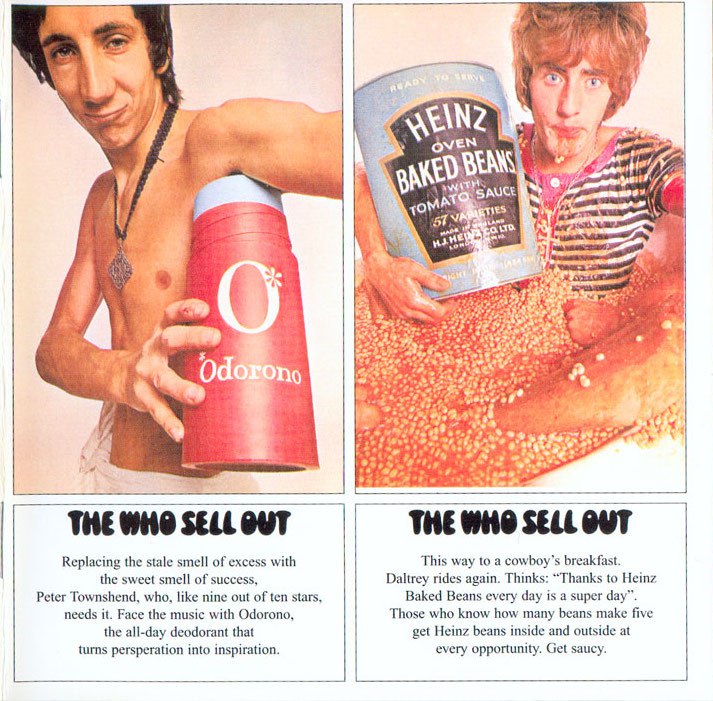
Now: The official name of the canned product became Heinz Beanz in 2008, and is primarily sold in the UK, where the company says 1.5 million cans are sold each day.
Baked beans fell off the map in the U.S. sometime in the 1970s, and even the company didn’t seem to know why.
“I don’t know why it sort of went away,” Noel Geoffroy, vice president, Heinz Brands/U.S. Consumer Products told the Pittsburgh Post-Gazette in 2012, when Heinz’s baked beans returned to the shores from whence they came (albeit with different packaging and varieties of baked beans). Its parent companies are now Berkshire Hathaway and 3G Capital, as of 2013.
Here’s a recent ad from the UK:
JAGUAR
Then: Begun as Swallow Sidecar Company in 1922, in 1966 Jaguar merged with the British Motor Corporation, and in 1968 merged with Leyland Motor Company to create British Leyland. In the time of Mad Men, Jaguar was not at all afraid to get sexified, as seen in the below ad:
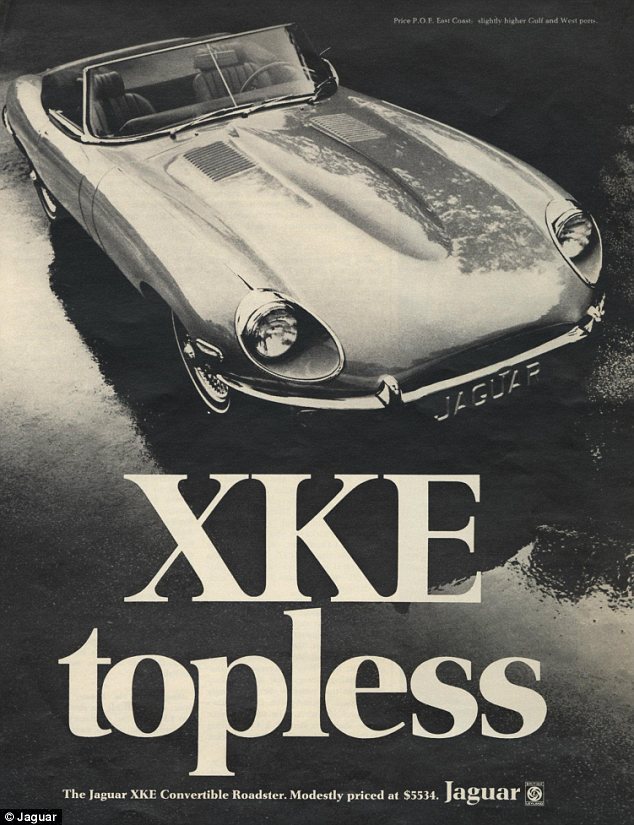
Now: Jaguar has company now, as it’s one of the Jaguar Land Rover brands manufactured in the UK and owned by Indian company Tata Motors.
In 2015, Jaguar went hi-tech with its advertising, with print ads in various publications that were linked to digital content through an app for Google Glass and mobile devices, as reported by AdAge.
MANISCHEWITZ
Then: Manischewitz, makers of Kosher foods like wine and matzo, had been around for about 80 years by the mid 1960s. On Mad Men, the company uses the slogan “Man-O-Manischewitz What a Wine!” which was in fact, a real ad campaign by Manischewitz used by the wine brand (licensed to Brooklyn’s Monarch wines).
But this 1960 ad is too good not to share, starring the one and only Sammy Davis Jr.:
Now: The Manischewitz Company revived the “Man-O-Manischewitz” ad line in 2009 for its line of kosher foods.
SNO BALL
Then: PepsiCo filed a trademark for Sno Ball in 1967 — not to be confused with the Hostess Sno Ball — this product was described as “Carbonated soft drinks and syrups and concentrates for their preparation.” It was advertised as a “sipping ice,” though there isn’t much still out there as an example.
The only real advertising image we could find was a tin sign:
Seems the creators of Mad Men couldn’t find much either, as noted by this Gothamist article that Ginsberg had a photocopy of what appears to be that same sign.
Now: No longer exists — the trademark is expired and most people just figure you’re talking about a Hostess dessert.
VIRGINIA SLIMS
Then: A Philip Morris brand of new, thinner cigarettes aimed at women that launched in 1968, the ad campaign that accompanied Virginia Slims’ debut is one of the most famous. “You’ve come a long way, baby” (sometimes without the “baby”) was developed by the Leo Burnett Agency, and ended up selling a lot of cigarettes for the company.
Now: Manufactured by Altria Group, a lot has changed in the cigarette advertising industry — namely that it’s illegal in the United States on TV and radio, and there are strict rules regarding ads that appear in print.
Season 6: December 1967 – November 1968
AVON COSMETICS
Then: Founded by a door-to-door book salesman David H. McConnell, who started selling perfumes in New York after realizing his female customers preferred the scent samples to the books that they came with, his company was first called the California Perfume Company Inc. before it became Avon Products Inc. in 1929.
“Ding Dong, Avon Calling!” ran from 1952-1967, promoting both its products and its direct-selling model.
Now: In recent years Avon has turned to celebrity faces like Salma Hayek in 2004 and Reese Witherspoon in 2008 to bring in a younger set of sellers and customers. Tennis player Maria Sharapova became the face of Avon fragrances in 2014.
CARNATION
Then: Carnation started as the Pacific Coast Condensend Milk Company in 1899. By the time Don and the gang were pitching to executives, the company had a slew of food products, including Carnation Instant Breakfast.
Now: Nestle acquired Carnation Company in 1985, and still has a line of instant breakfast drinks on the market called Nestle Breakfast Essentials. Nothing like a family getting together to gather round and drink breakfast as a family.
CHEVROLET
Then: The SCDP gang on Mad Men likely wouldn’t have celebrated landing the Chevy Vega — the “secret” car known only as Chevy 887 — campaign for too long: The car was one of General Motors biggest lemons ever, despite winning Motor Trend’s Car of the Year in 1971. A slew of problems including a rust-prone exterior, its aluminum engine warped and engine fires. This multitude of issues forced six separate recalls throughout the 1970s (though not so bad compared as our current recall bonanza, eh?). The Vega was pulled off the line for good in 1977.
Here’s an ad from 1971 that the SCDP group might’ve pitched, if they were real and not fictional characters:
Now: GM still owns Chevrolet, with the slogan “Find New Roads” replacing “Chevy Runs Deep” in 2013.
FLEISCHMANN’S MARGARINE
Then: Brothers Charles and Max Fleischmann are credited with introducing America’s first commercially produced yeast in the 19th century, going on to found Fleischmann’s Yeast. That company merged into Standard Brands in 1929, with the Fleischmann name spreading to other products like margarine.
The margarine market was crowded in the 1960s with competitors like Imperial and Blue Bonnet, as seen on Mad Men. Fleischmann’s marketed its margarine as a healthier alternative to butter, something that the Federal Trade Commission would have an issue with today, for sure.
Here’s a 1971 ad, pushing Fleischmann’s purported beneficial effects in preventing heart disease… a bit early in life.
Now: Still found in grocery aisles today, Fleischmann’s changed owners a few times, from Standard Brands to Nabisco, and now is a ConAgra Foods brand. It still uses the word “healthy” in marketing material, with the slogan, “Eat Well, Live Well, Be Well At Fleischmann’s” touting cholesterol free products.
KOSS HEADPHONES
Then: Koss Corporation founder John Koss invented the first stereo headphones in 1958. Though Mad Men had Koss running an ad during the 1968 Super Bowl, in reality, Koss says it has never run an ad during the big game.
It did have some pretty heavy hitters on its side, however, if you remember these guys:
Now: Koss is still around today, with the founder’s son Michael J. Koss taking over as president and executive officer in 1991.
OCEAN SPRAY
Then: Ocean Spray was formed in 1930 by three cranberry growers who started coming up with new cranberry products, including the company’s first Cranapple juice blend in 1963. In 1968, the company had just switched ad agencies, AdAge reported, moving the business from DDB to Ted Bates and Young & Rubicam. Cranprune, anyone?
Now: The Ocean Spray Cooperative of more than 700 grower families is still marketing juice these days, with the cranberry bog guys bringing comedic relief in recent years.
SHERATON
Then:Founded in 1937, Sheraton Corporation of America was the first hotel chain listed on the New York Stock Exchange in 1947. By the 1960s, the company touted things like “Reservatron,” what it says was the industry’s first electronic reservation system, and in 1965, became the first hotel chain with a toll-free 800-number for direct guest access. It still uses the same number today.
Now:Starwood Hotels & Resorts Worldwide, Inc. acquired Sheraton in 1998. The brand knows what the kids are into these dasy, using hashtags for its latest promo, encouraging guests to use #BetterWhenShared to share photos of their stays.
ST. JOSEPH ASPIRIN
Then: The St. Joseph company was founded in 1887 by Leopold Gerstle, with the company touting its product then as the first low dosage aspirin. In 1920, Schering Plough Healthcare Products bought the St. Joseph company. Its aspirin was mainly was marketed for children until using aspirin for the younger set fell out of favor.
Now: Schering held onto the brand until 2000, then selling the rights to company in 2011 to Ilex Consumer Products Group Inc. bought the U.S. rights to the brand.
St. Joseph no longer makes children’s aspirin, and instead returned to the market in 1993 with a new adult formulation.
SUNKIST
Then: Sunkist Growers, Incorporated was known as the Southern California Fruit Exchange in 1893 before changing its name in 1905.
Now: Sunkist is still a citrus cooperative of California and Arizona citrus growers. But beyond just selling fruit, the company licenses its trademark to more than 40 food and beverage companies worldwide.
What did you eat at soccer games when you were young? Oranges, right? Sunkist wants to be that orange for today’s kids.
Season 7: January 1969 – April 1970
ACCUTRON WATCHES
Then:The name of the company behind Accutron is Bulova, which was founded in 1875, and developed the watch using a resonating tuning fork as a way to regulate the time-keeping function.
Now: Bulova was sold to Citizen Watch in 2007. In 2014, the company came out with this ad for the Accutron II:
H. SALT FISH & CHIPS
Then: Haddon Salt’s fish and chips shop in Skegness, UK impressed Americans passing through with its “non-greasy” fare, the company says, inspiring him and his wife to move to the United States and open their first restaurant in Sausalito in 1965. The shop grew to a franchise, but Haddon decided to change the name from Salt’s Fish & Chips to “H. Salt, Esq. Authentic English Fish and Chips,” as “esquire” made the whole thing sound even more British, he thought.
Here’s an ad for a local franchise back in the day:
Now: There are 26 independently owned franchise locations throughout Southern California today.
BURGER CHEF
Then: At one time the #2 fast-food burger chain in the U.S., Burger Chef’s parent company was founded in 1954, with its name reportedly chosen to portray a more highbrow version of Burger King. General Foods bought the chain in 1968, leading to rapid expansion.
Now: Burger Chef is no more: In 1982, General Foods sold Burger Chef to a company from Canada called Imasco, which owned Hardee’s at the time. It converted many Burger Chef locations into Hardee’s, and let franchisees of other locations decide if they want to convert or simply close. The last surviving Burger Chef location shut down in 1999.
PETER PAN
Then: Though as far as we can tell there were no Peter Pan Tinkerbell cookies in 1970 as seen on Mad Men, Peter Pan peanut butter had been around since 1920 through Swift & Company’s Derby Foods subsidiary. Originally called E.K. Pond, it was renamed Peter Pan after the J.M. Barrie character in 1928.
In the 1970s, one Peter Pan ad had a kid writing to the never-aging hero sort of like Santa Claus, but instead of asking for presents, he’s just sharing a compliment. How nice, kid.
Now: Today Peter Pan is owned by ConAgra Foods. The company has taken things social, with one Facebook promo photo touting it as “the perfect snack to satisfy our late night craving.” To which my Dad would reply, “Don’t just stand there! Shut the refrigerator door!”
Want more consumer news? Visit our parent organization, Consumer Reports, for the latest on scams, recalls, and other consumer issues.



